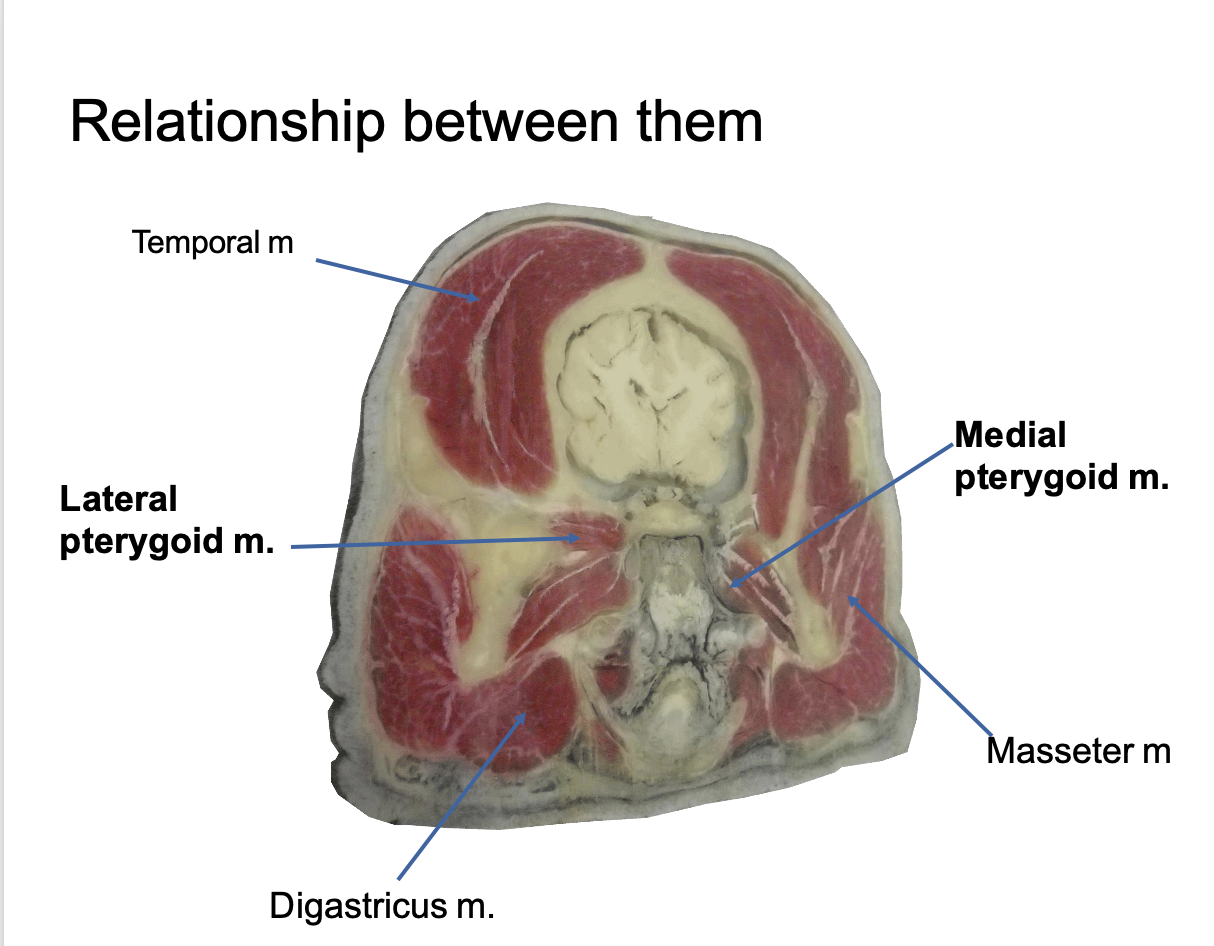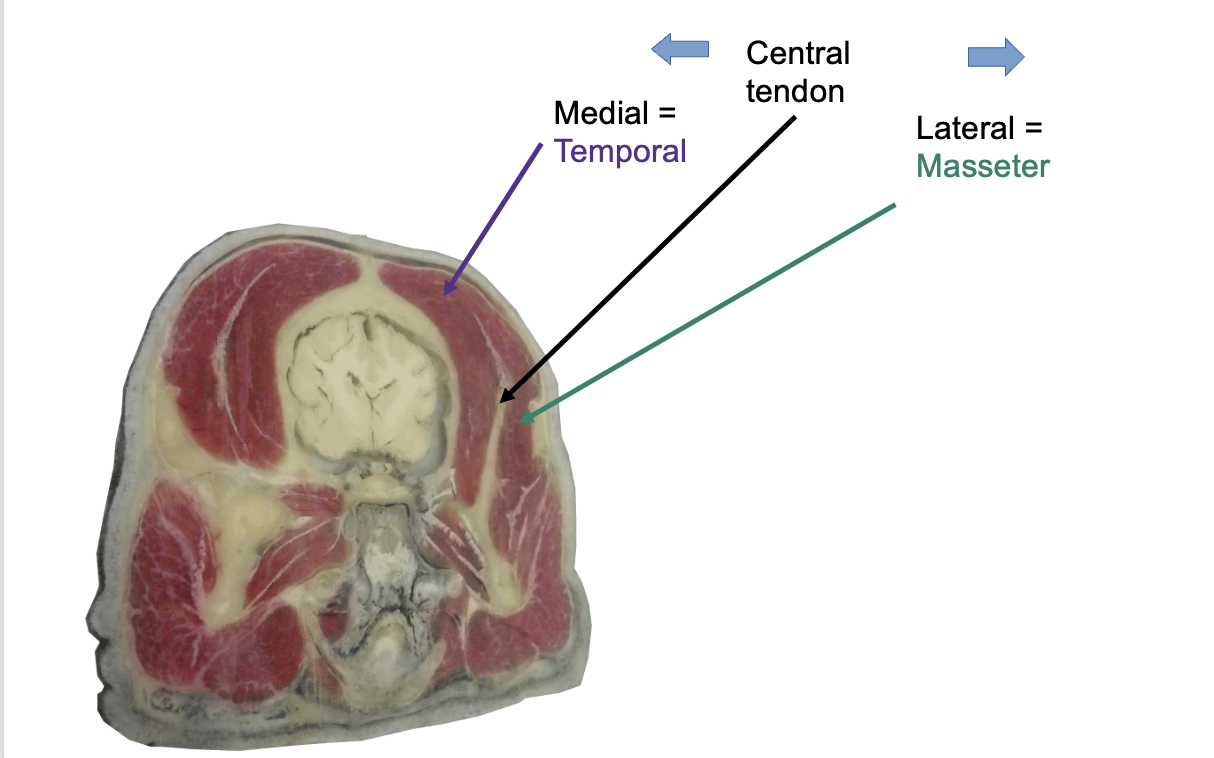skull anat lecture final
Neurocranium
under brain and protects senses
Visceroncranium
Jaw and pharynx
1/41
There's no tags or description
Looks like no tags are added yet.
Name | Mastery | Learn | Test | Matching | Spaced |
|---|
No study sessions yet.
42 Terms
Neurocranium
under brain and protects senses
Visceroncranium
Jaw and pharynx
Dermatocranium
Most of the remaining skull
Skull four groups
Cranium: protects the brain
face: form respiratory, digestive paths and orbis
hyoid apparatus: structural
middle ear: aid in hearing
Bones of cranium
Occipital: exoccipital, supraoccipital, basioccipital
Parietal
Frontal
Temporal
Sphenoid: basisphenoid, presphenoid.
Ethmoid
Incus
Stapes
Bones of face
Incisive
Nasal
Maxilla
Ventral concha
Vomer
Zygomaticus
Palatine
Lacrimal
Pterygoid
Mandible
Bones of hyoid apparatus
Stylohyoid
Epihyoid
Ceratohyoid
Thyrohyoid
Basihyoid
Bones of middle ear
Malleus
Incus
Stapes
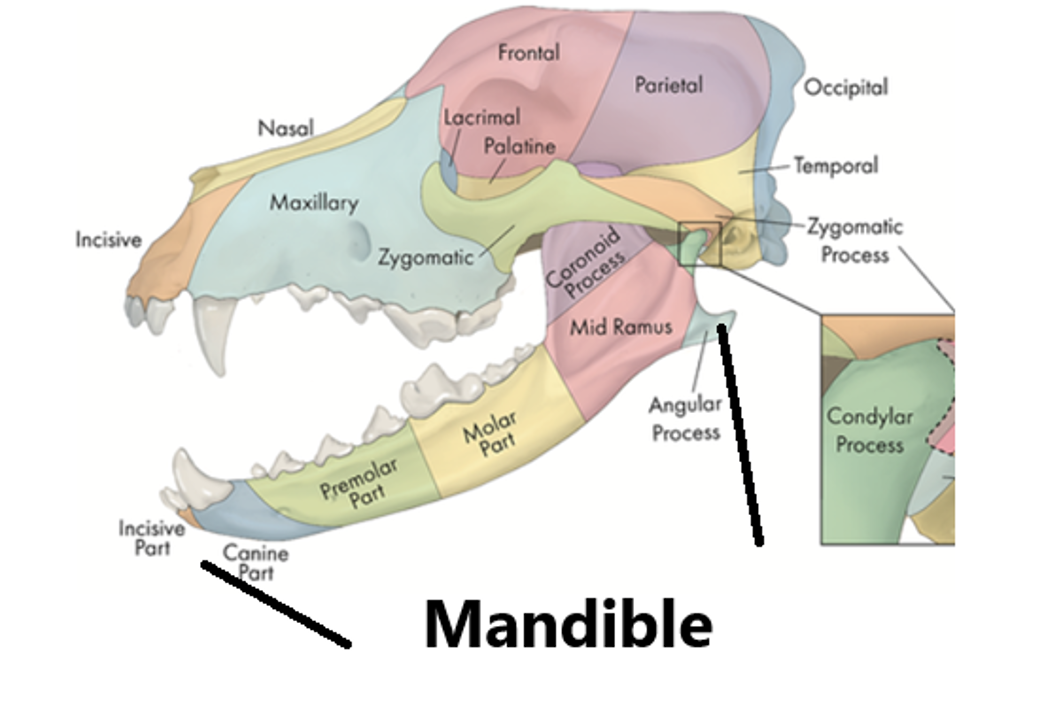
Know the regions of the skull
Know the occipital bone
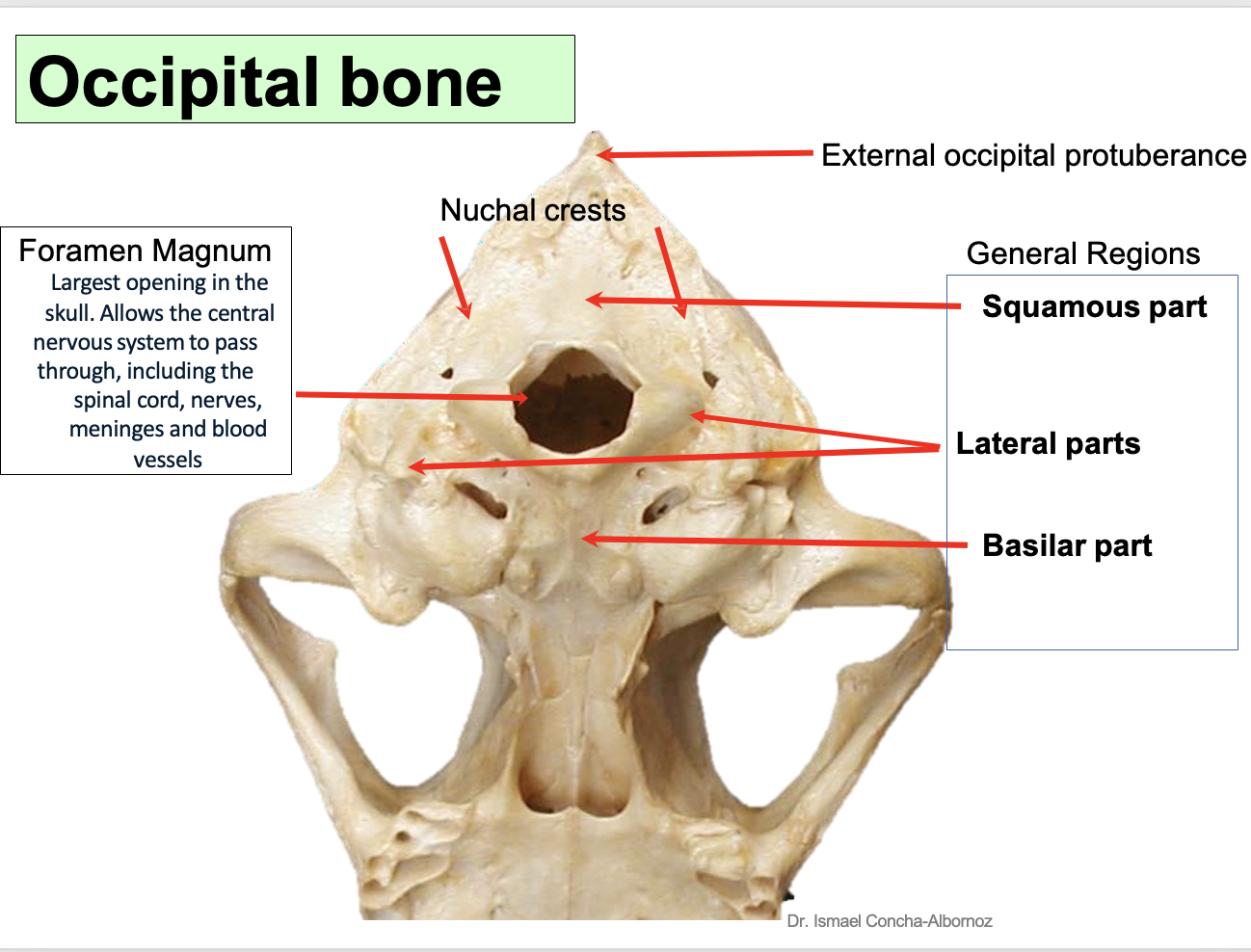
Occipital bone:
Hypoglossal canal (XII gyoglossal nerve)
Tympano-occipital fissure (IX glossopharyngeal) (X vagus) (XI Accessory)
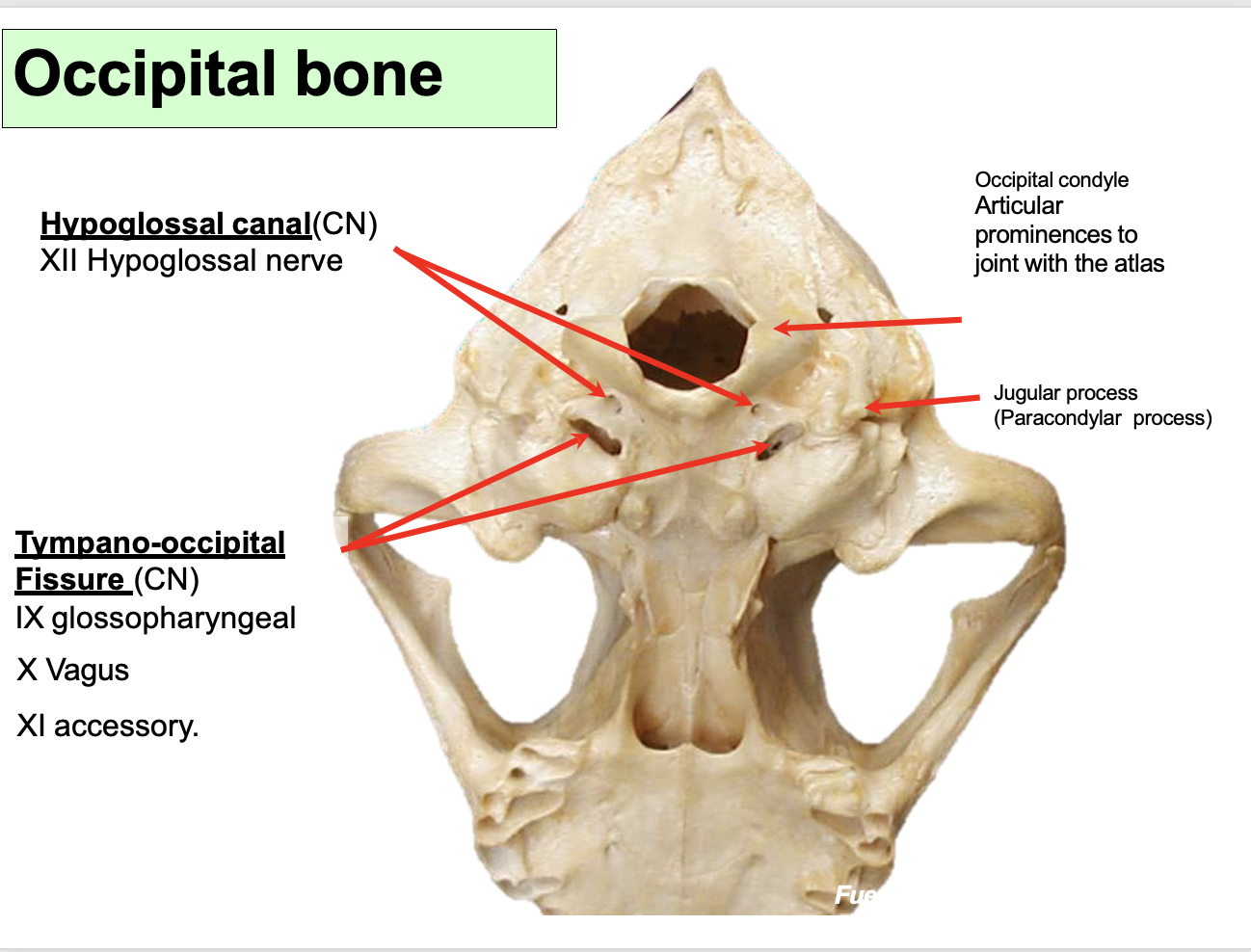
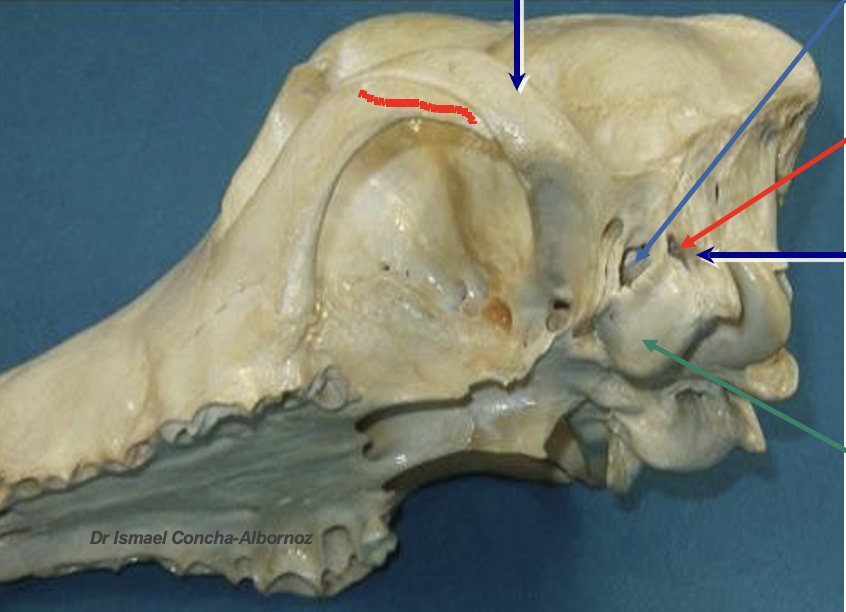
label temporal bone:
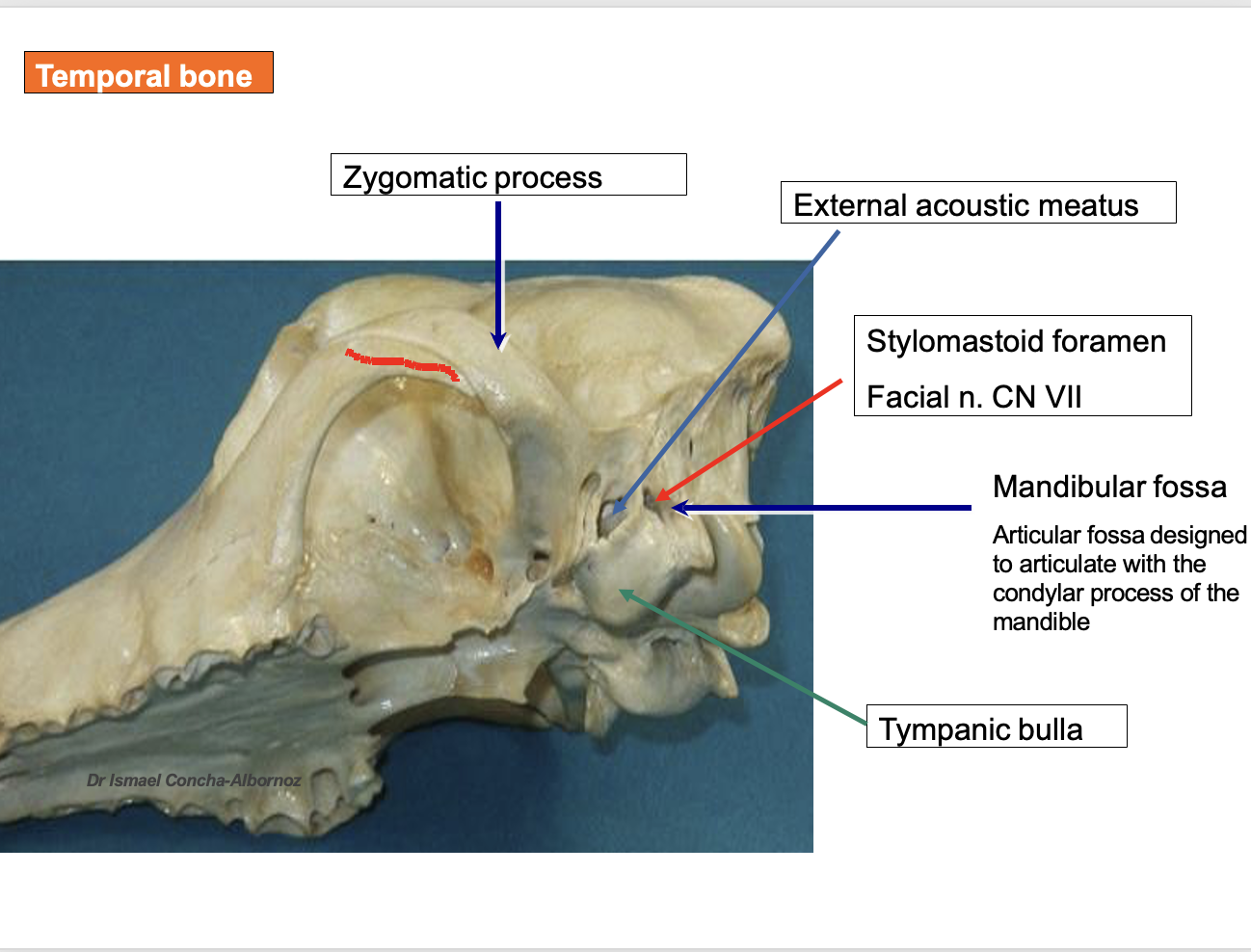

Label inner parts of temporal bone:
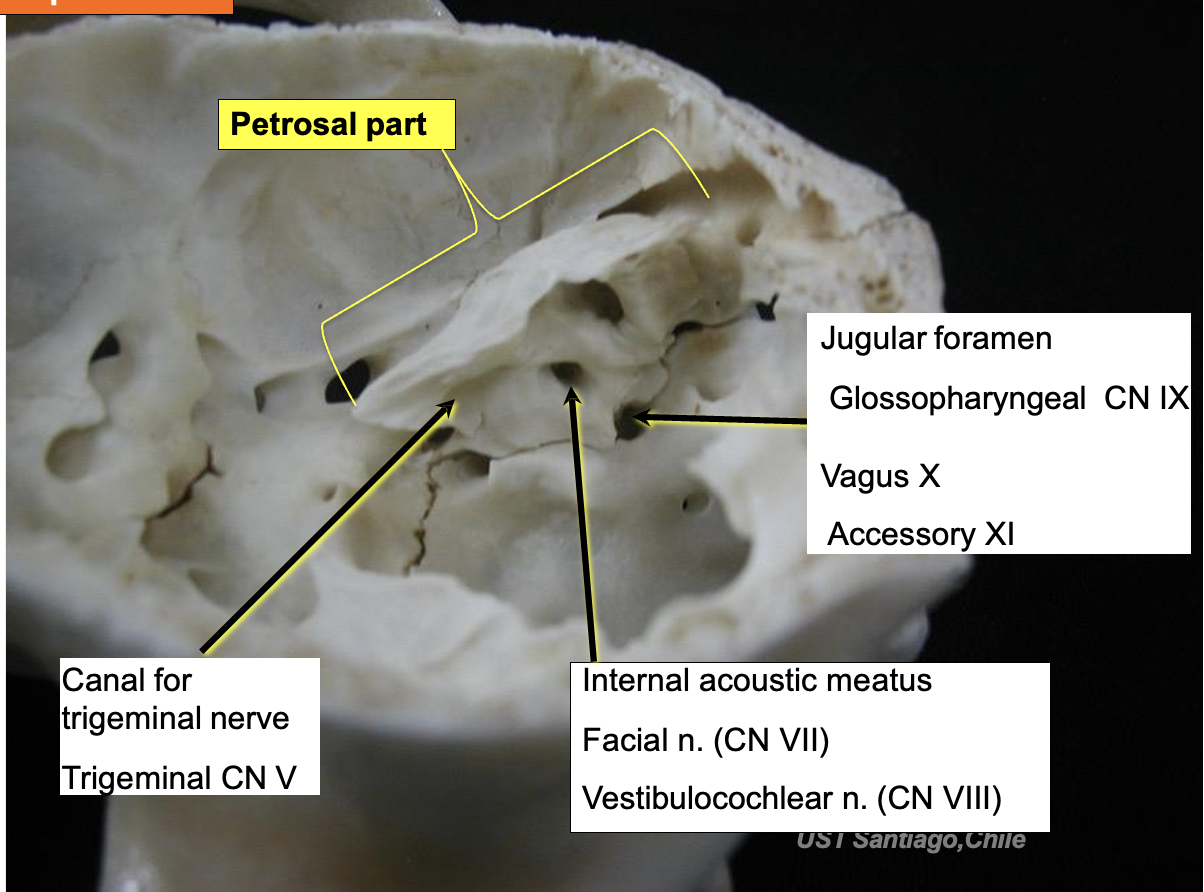
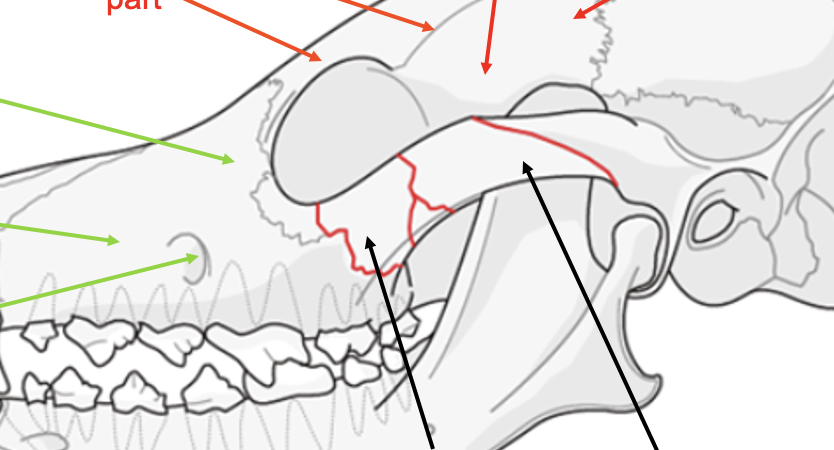
label:
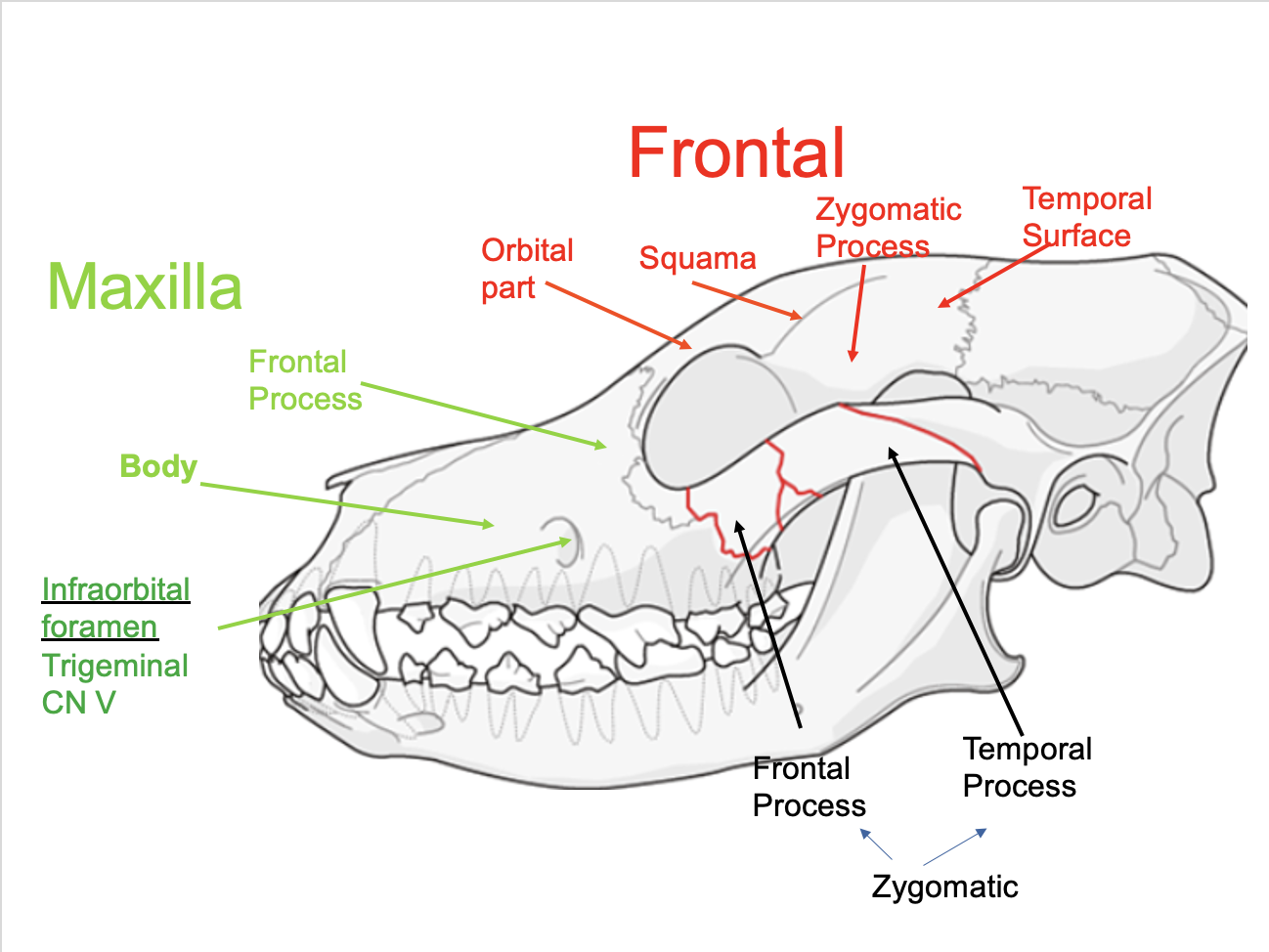
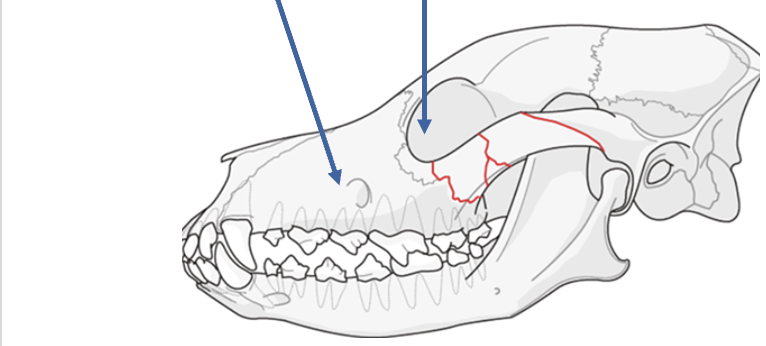
Maxilla infraorbital canal parts:

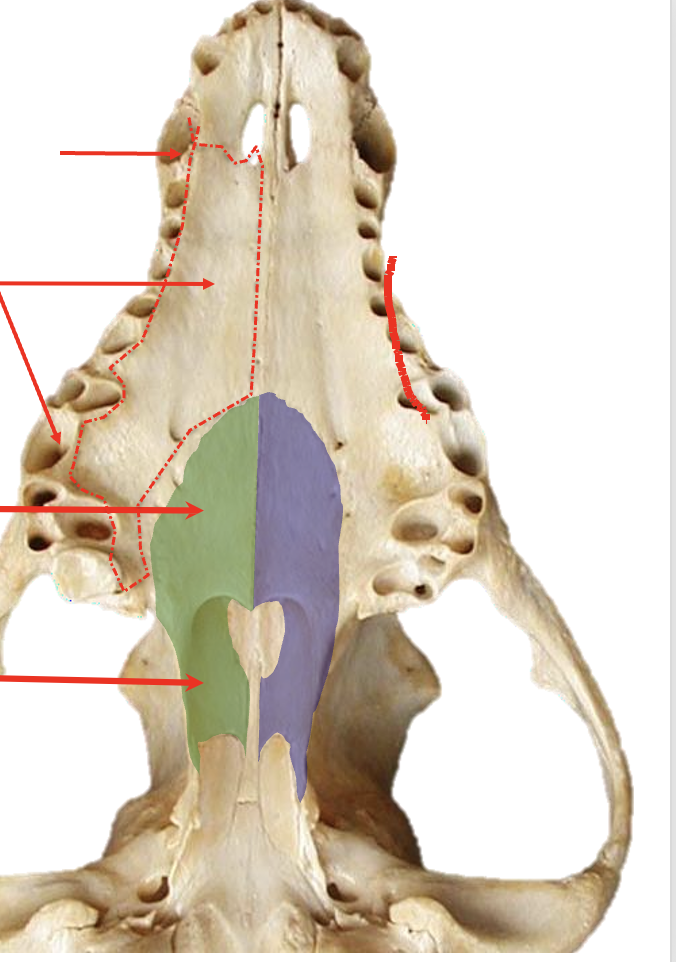
Palatine bone parts:
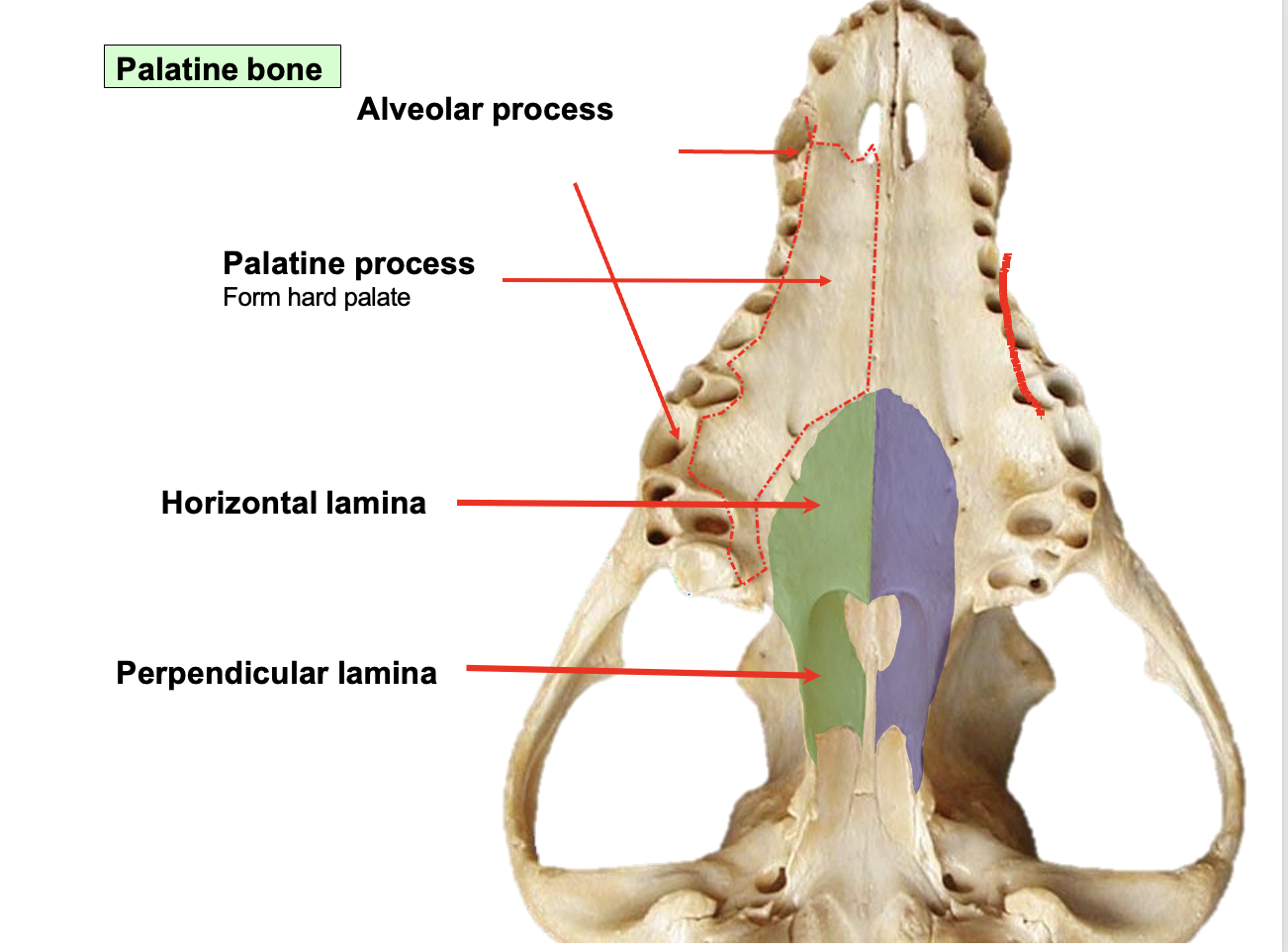

Mandible parts: Medial view
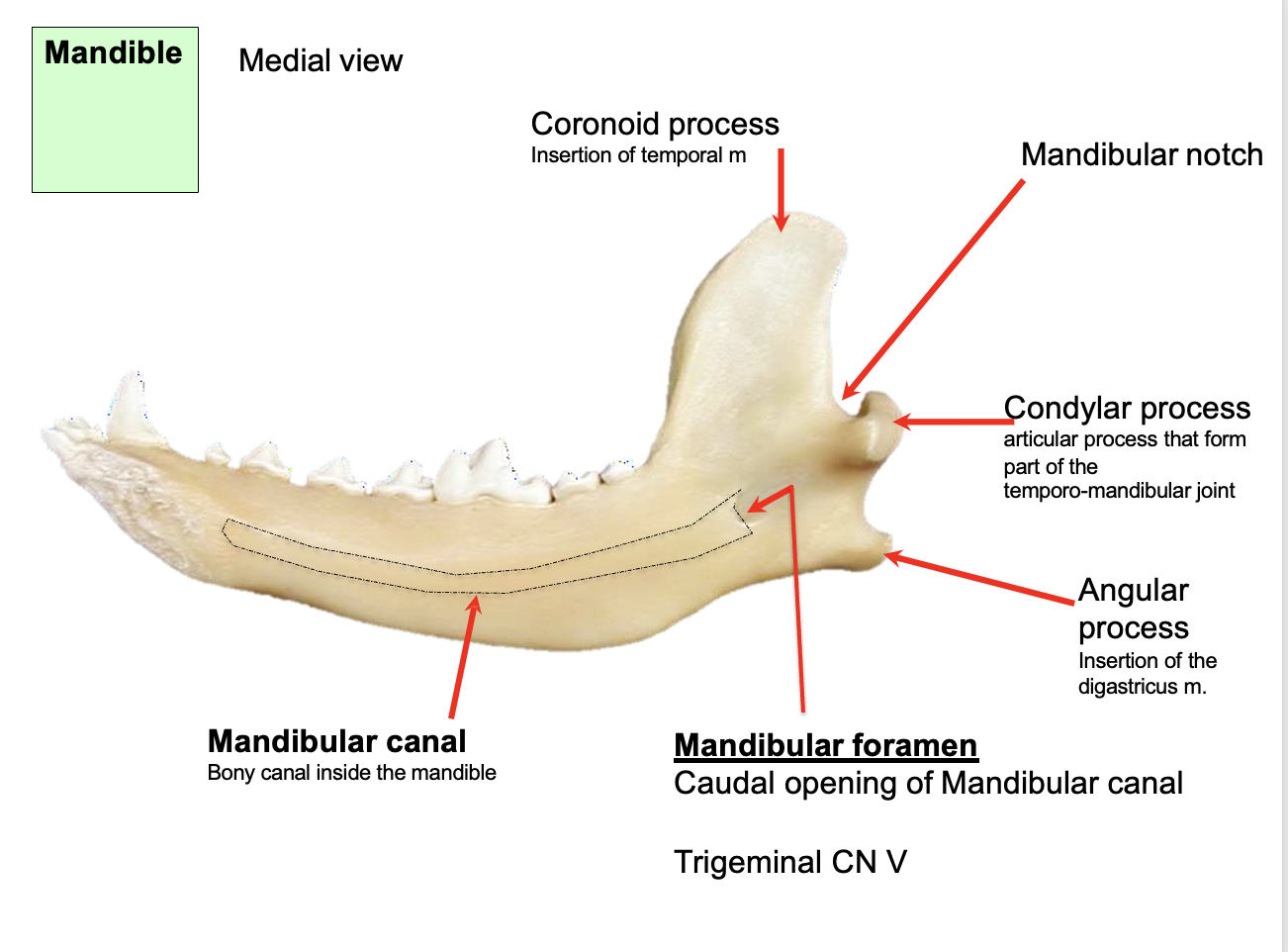

Mandible parts: lateral view
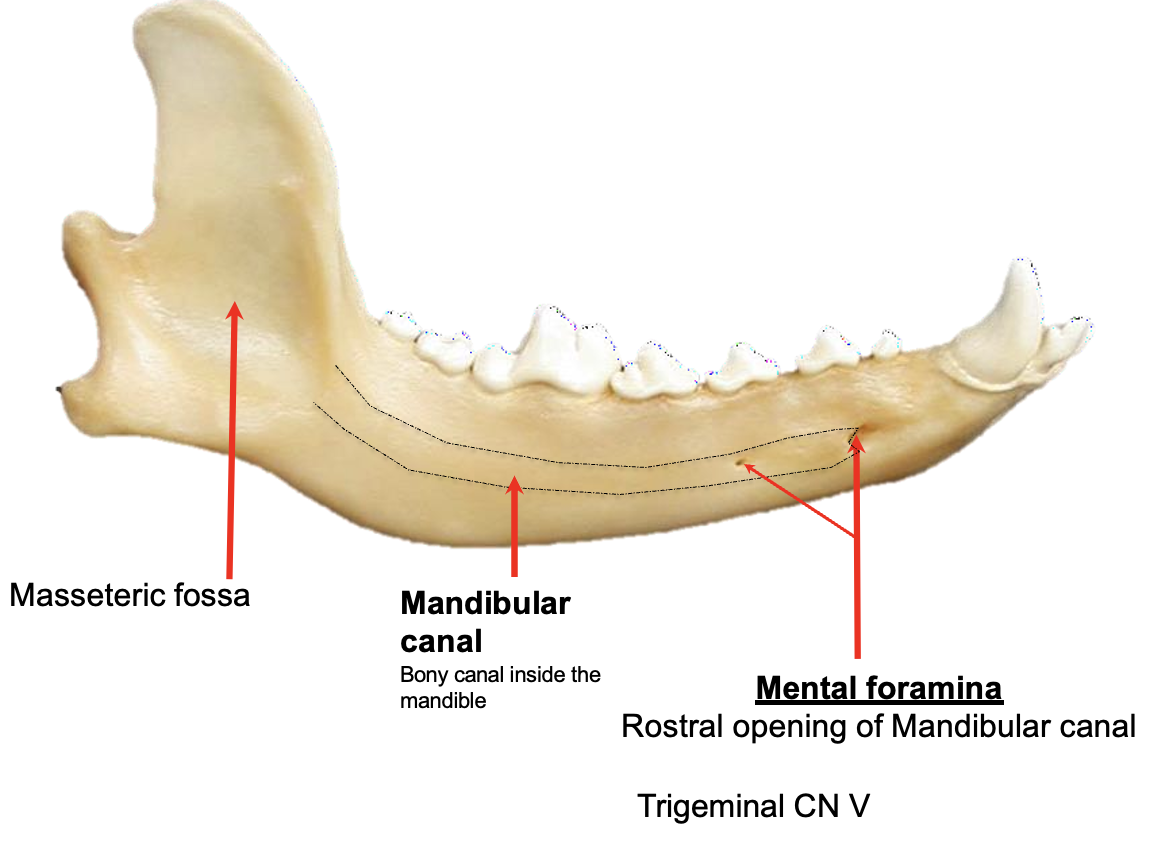
What are the sphenoid bones (2)
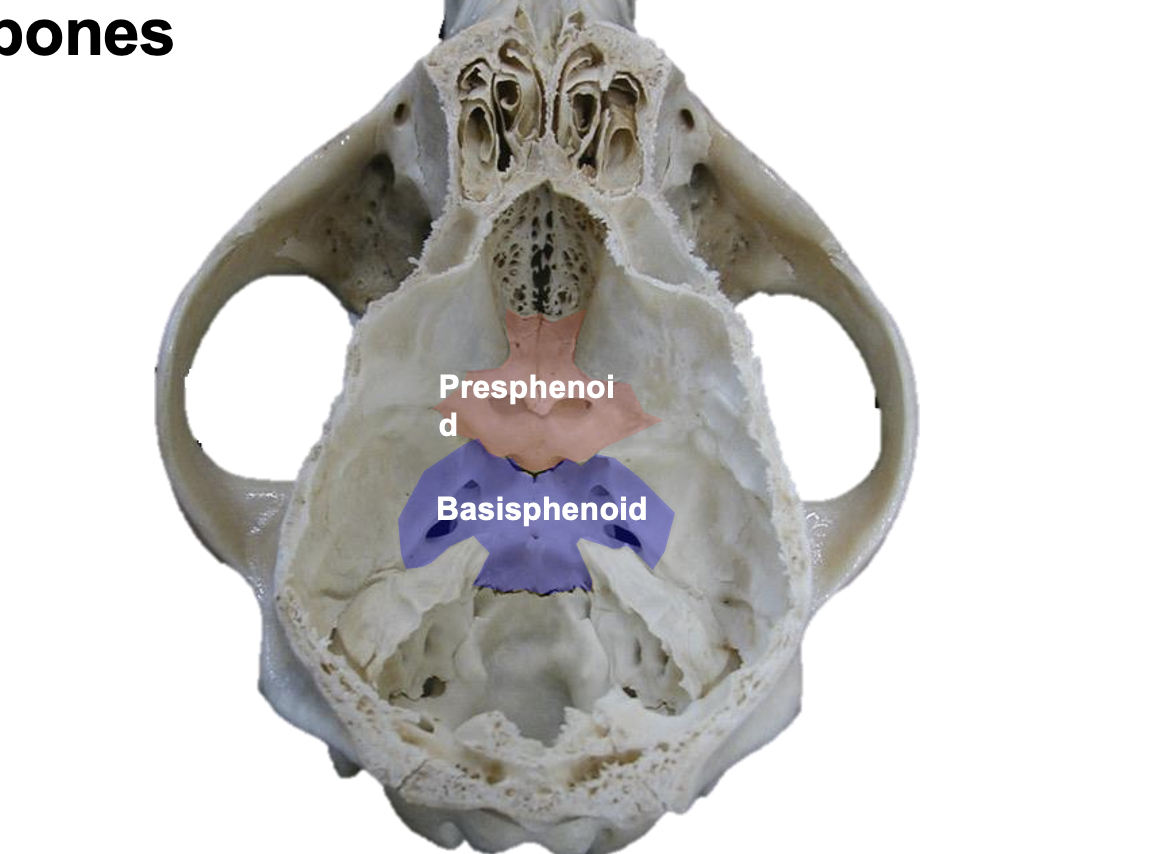

Basisphenoid specifications:
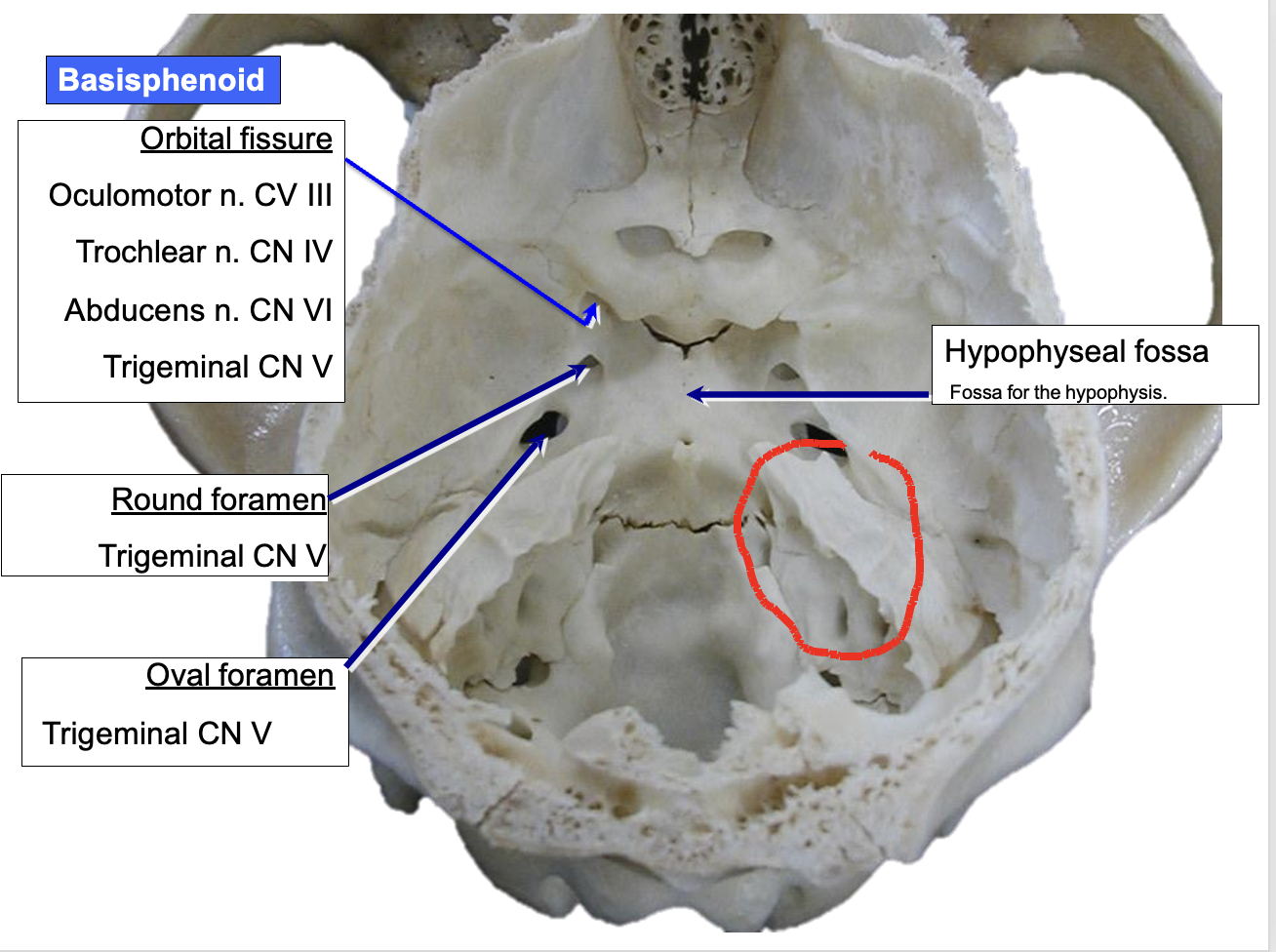
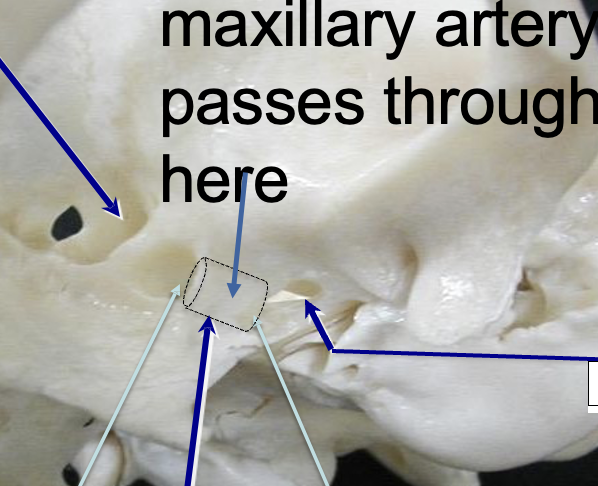
Basisphoid cont. pay attention to alar canal
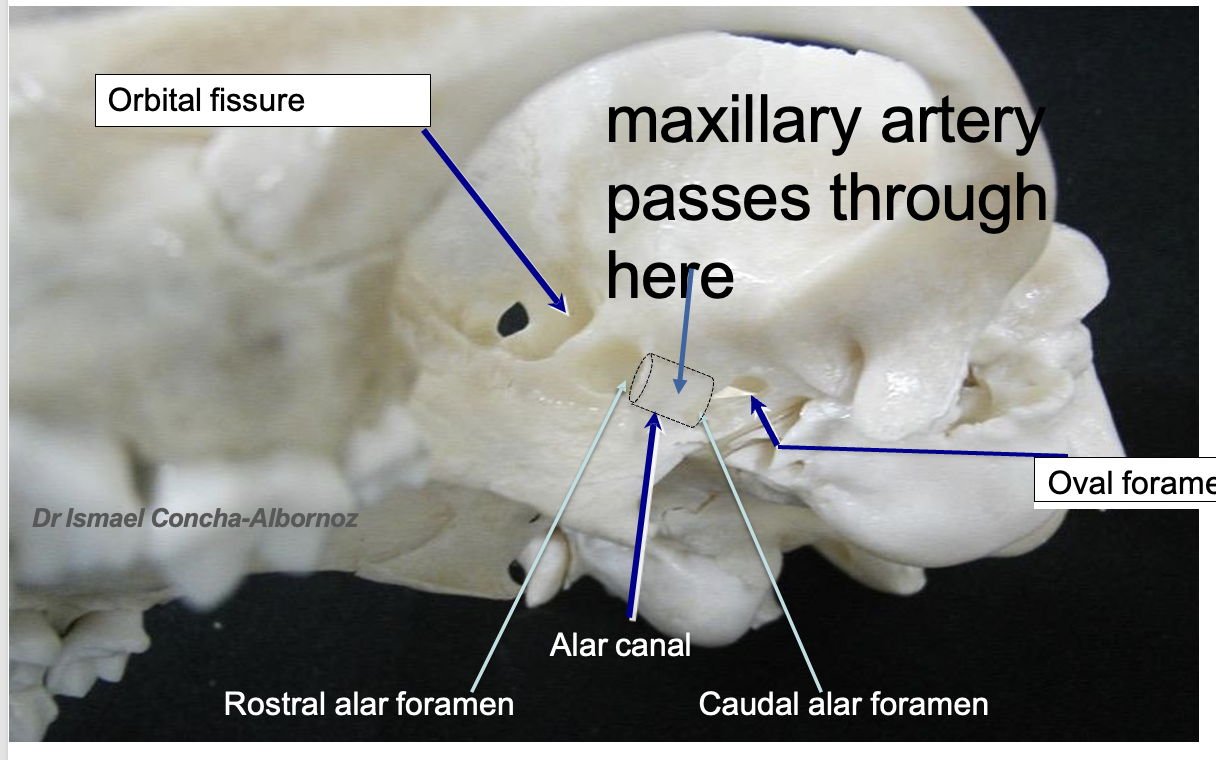
what do dogs have that cats dont have:
alar canal
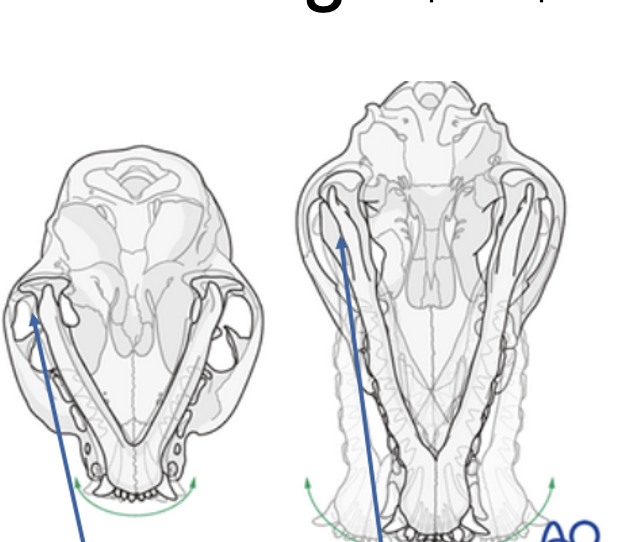
identify species based on narrow space between mandible and skull
cat L Dog R
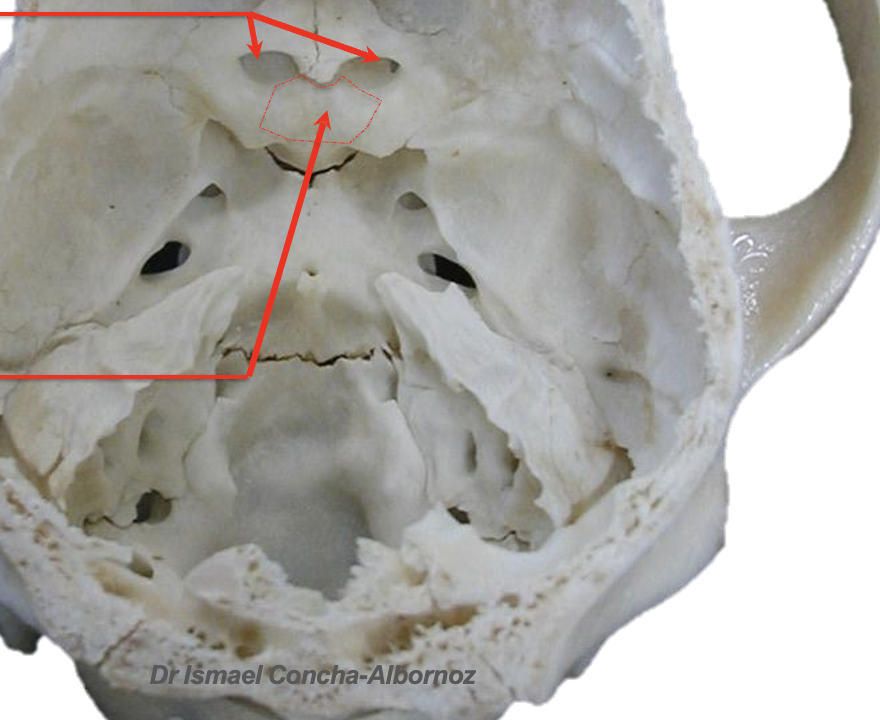
label parts of the presphenoid
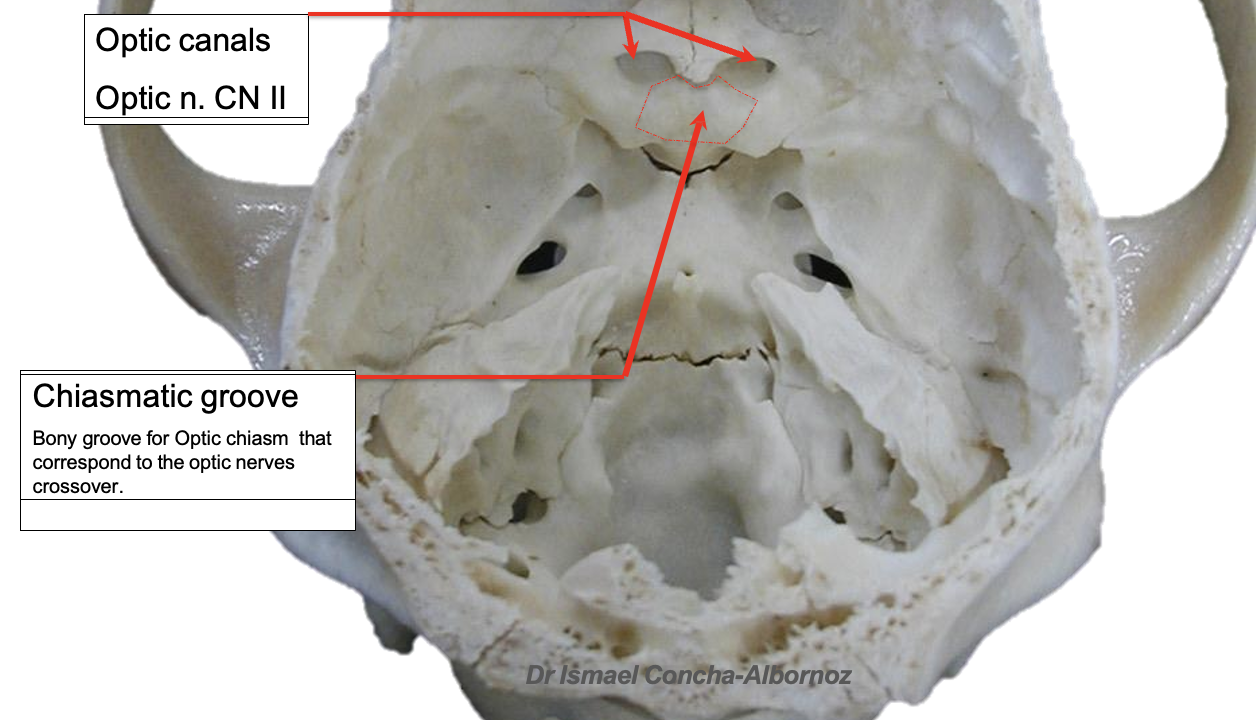
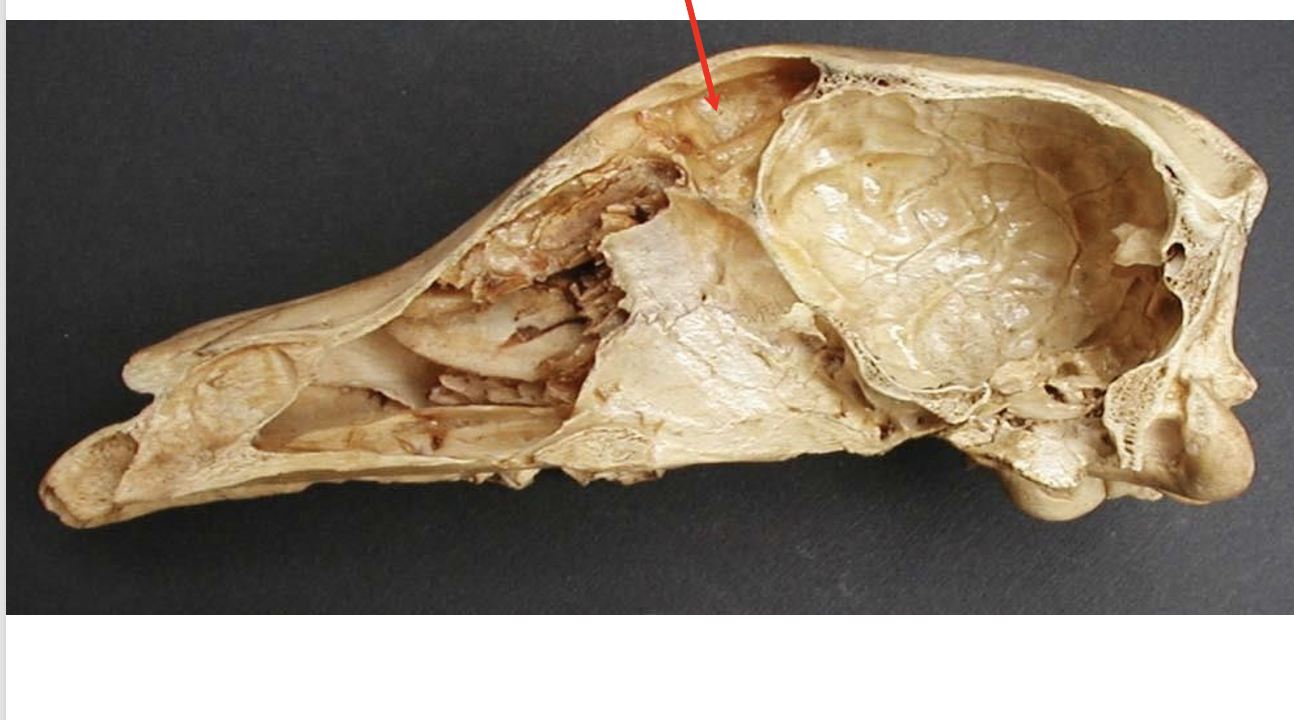
what is arrow pointing to on the frontal bone
frontal sinus
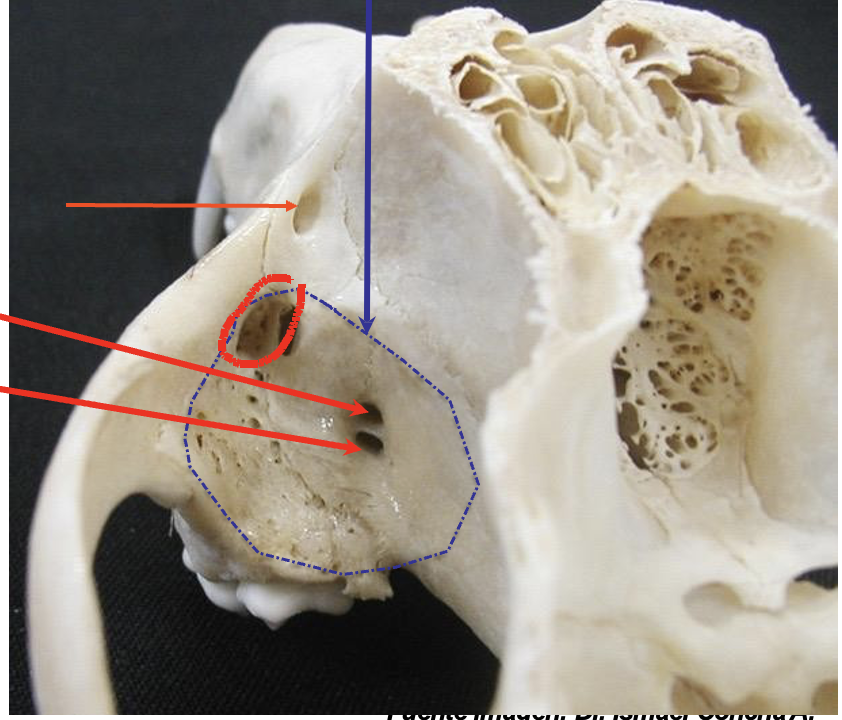
Label lacrimal bone:
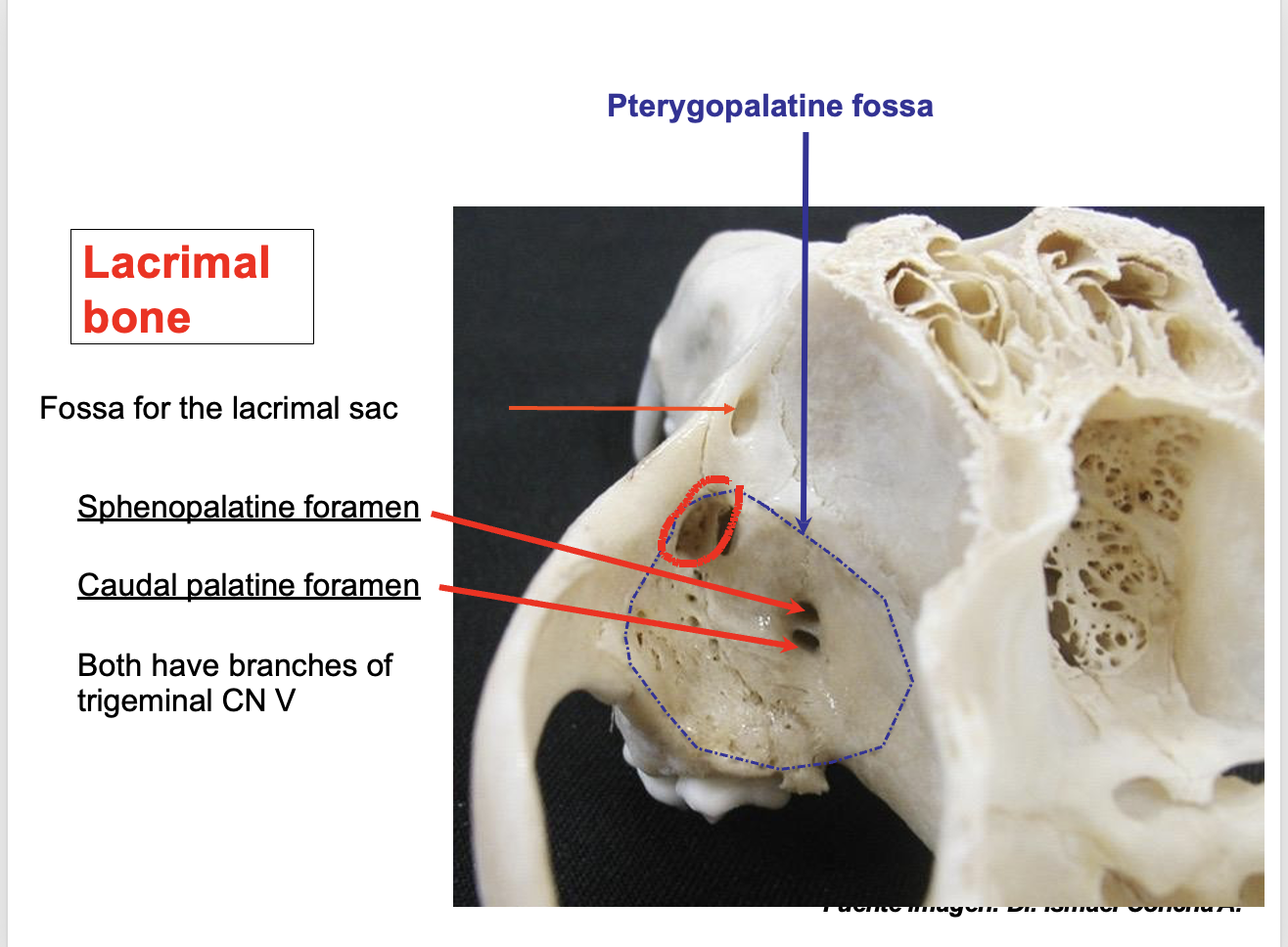
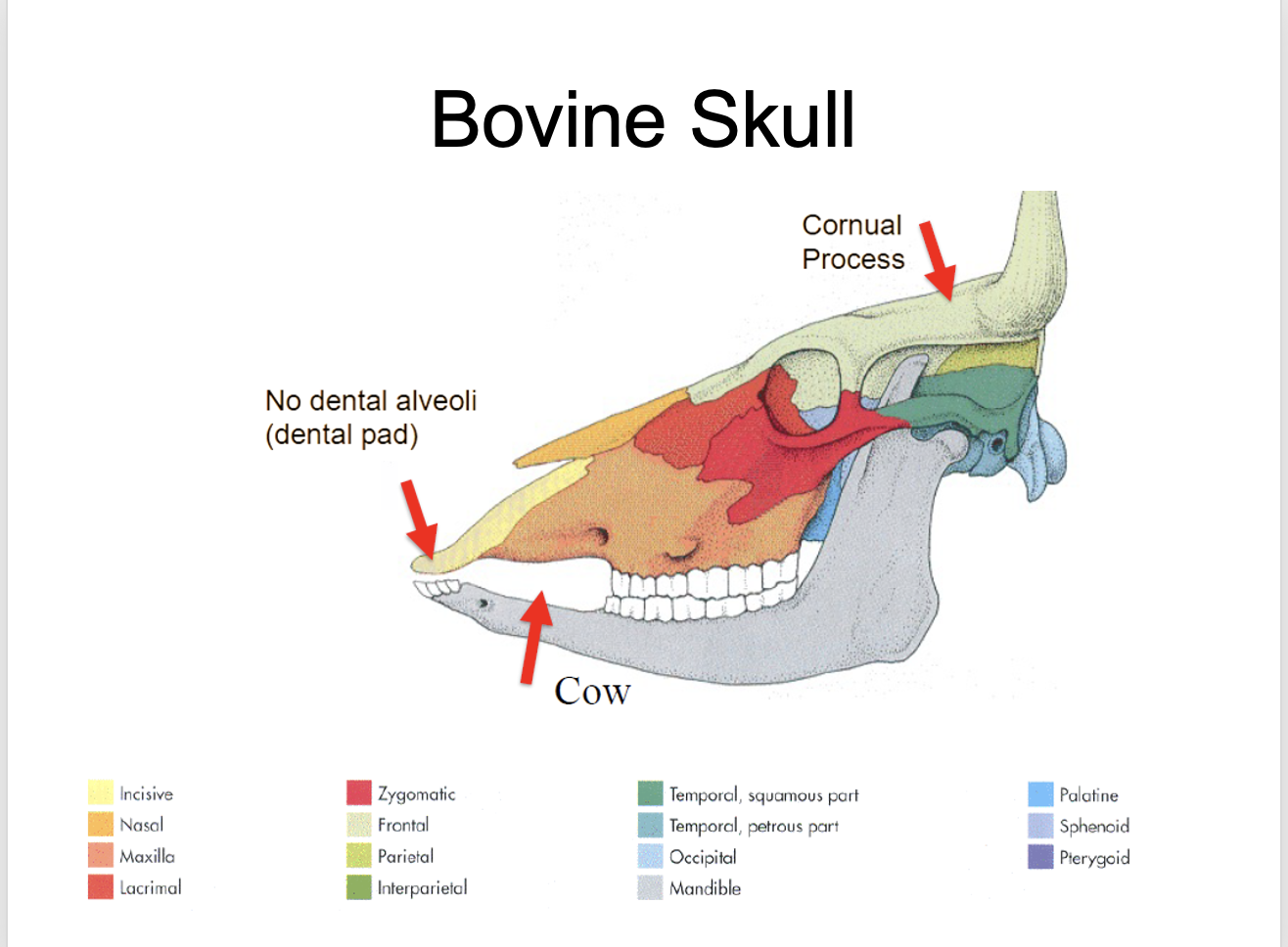
Know the regions
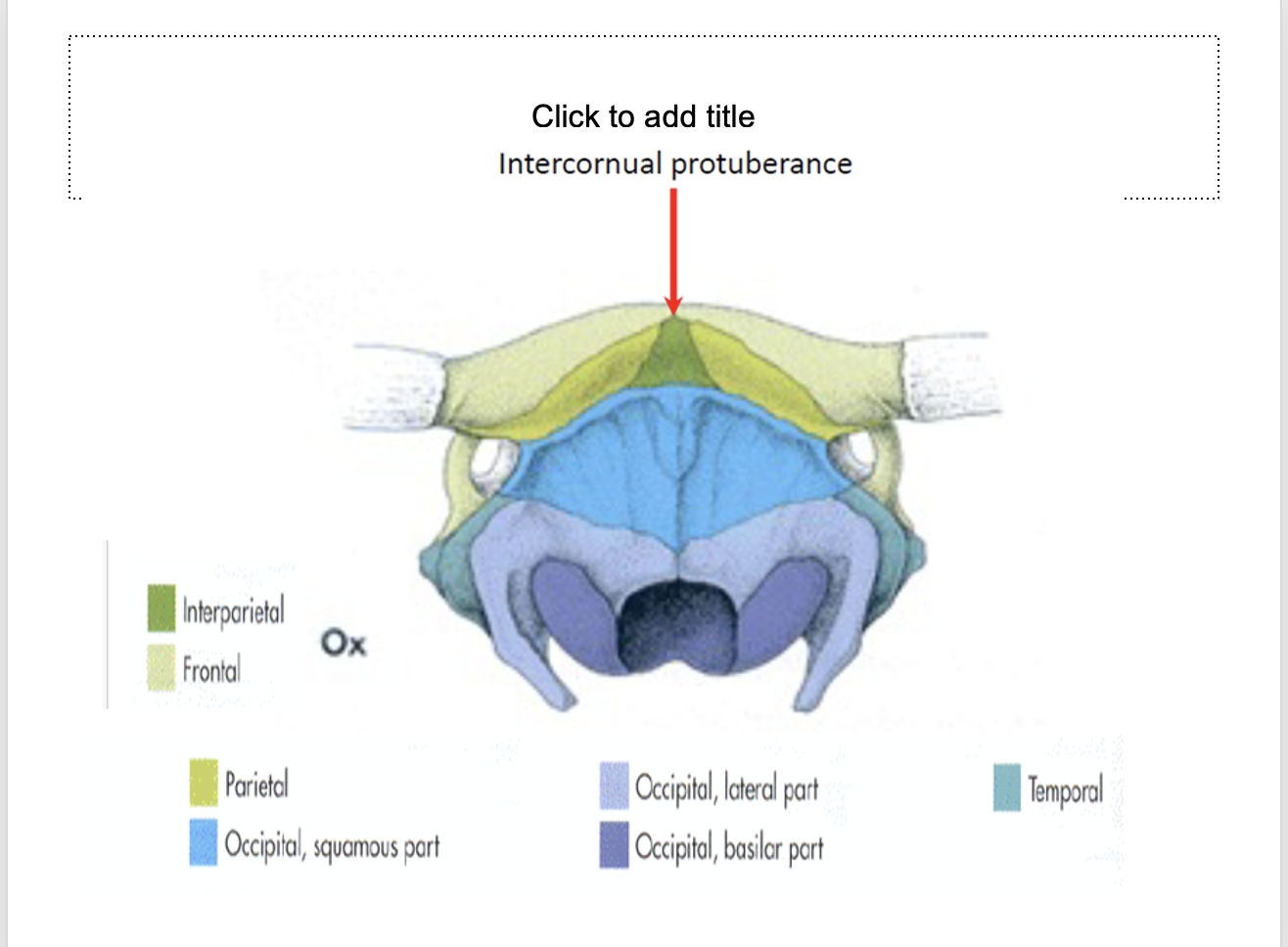
More regions to know
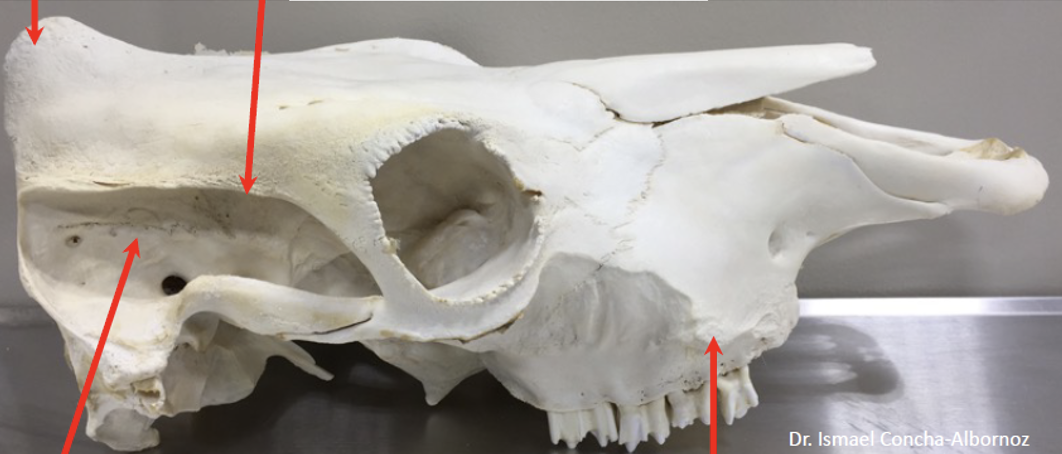
label :
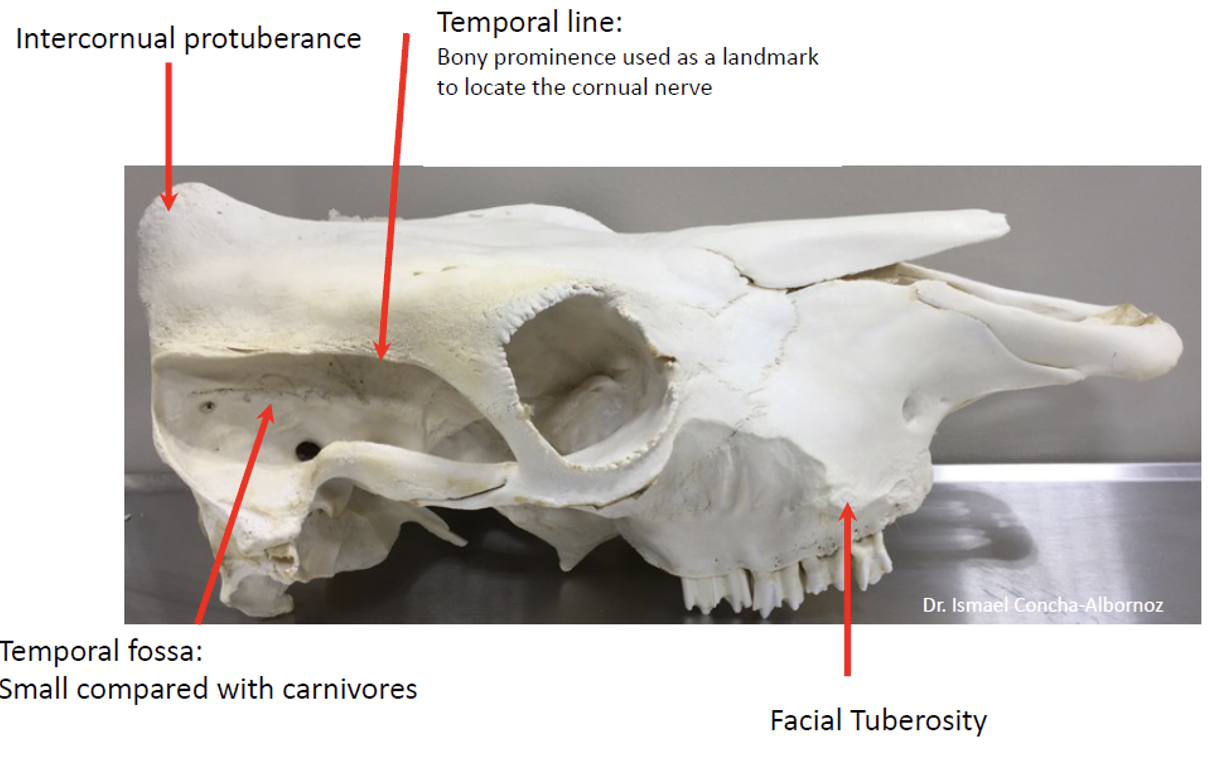
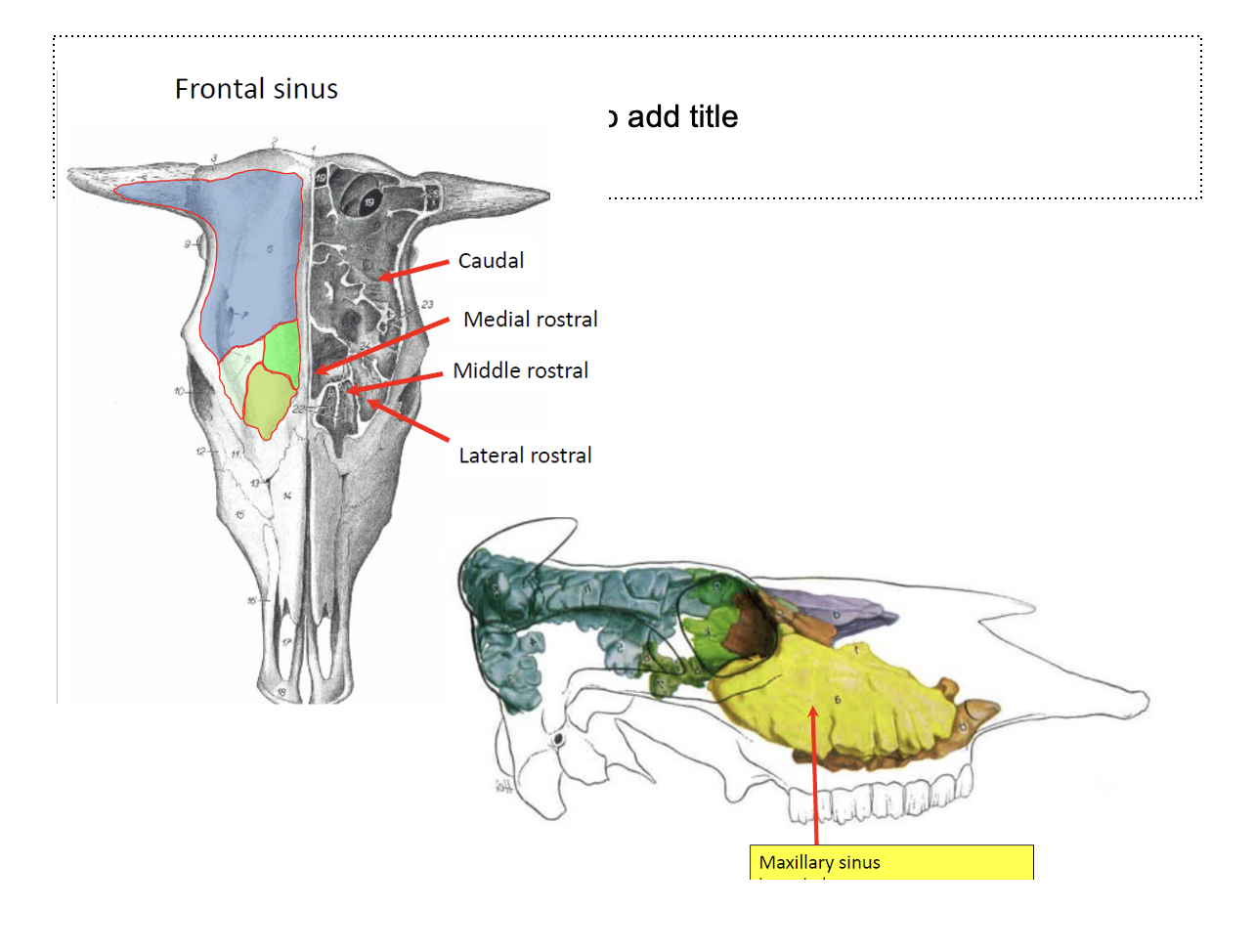
frontal sinus parts:
Cornual diverticulum of frontal sinus
end of the bone within the horn
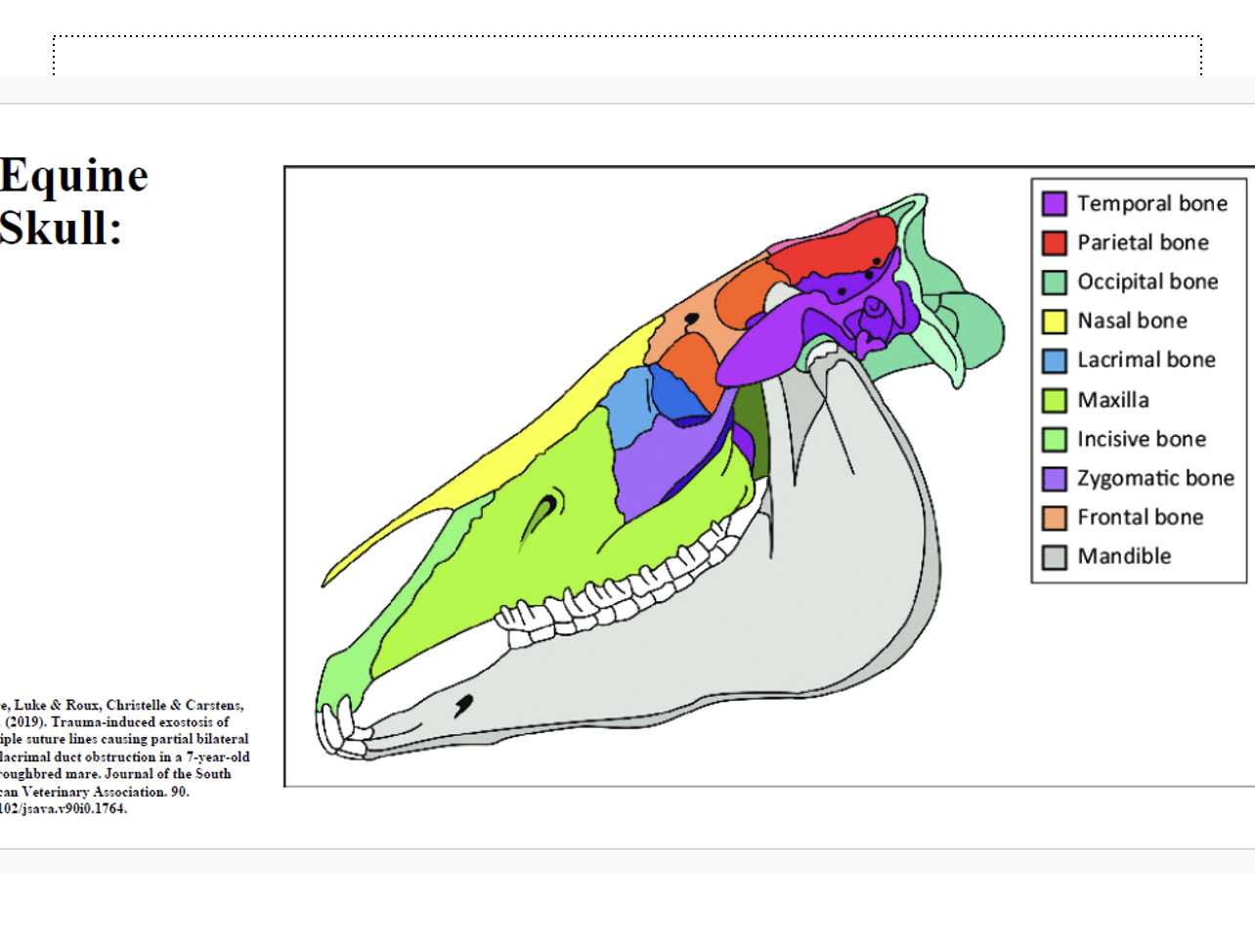
equine skull parts
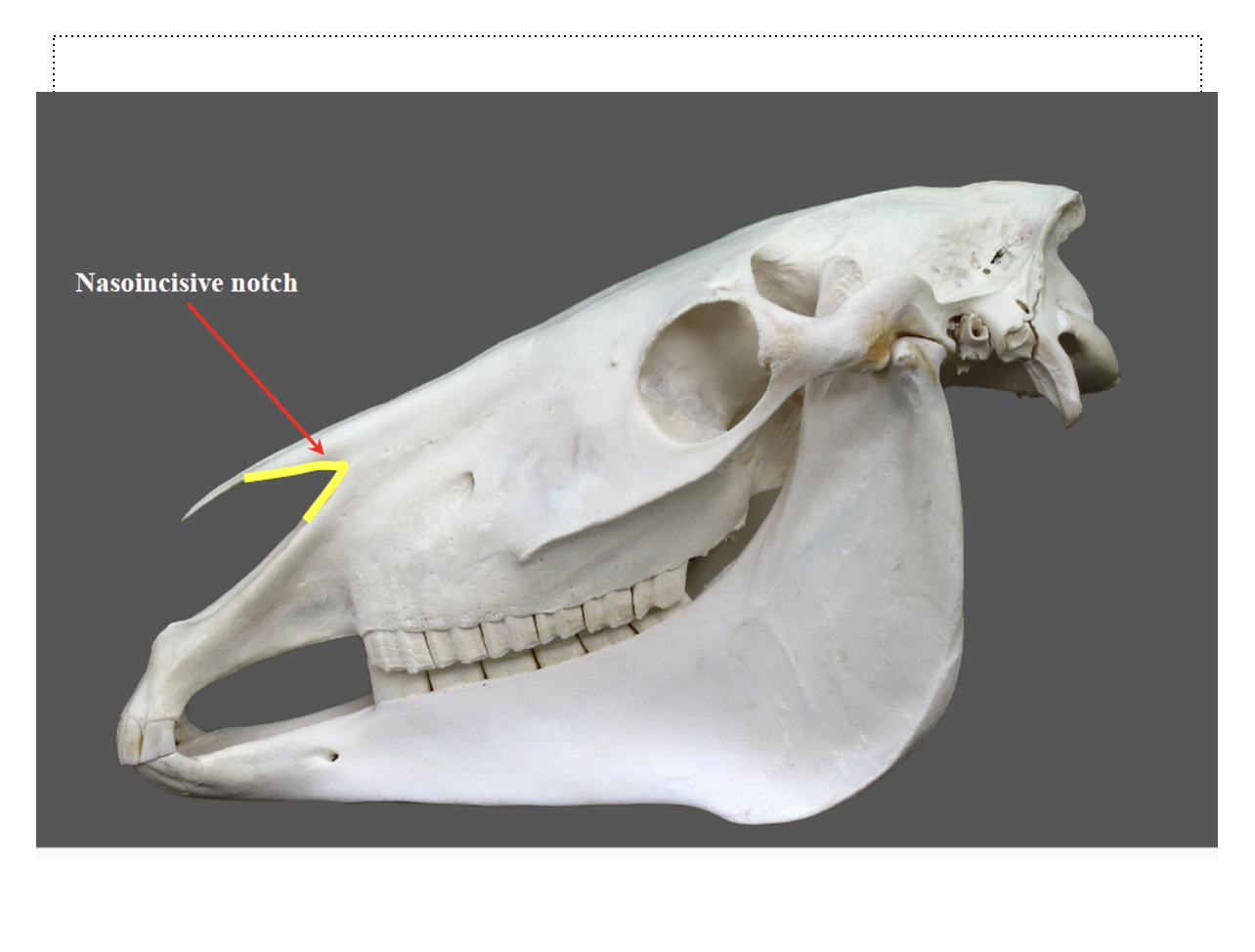
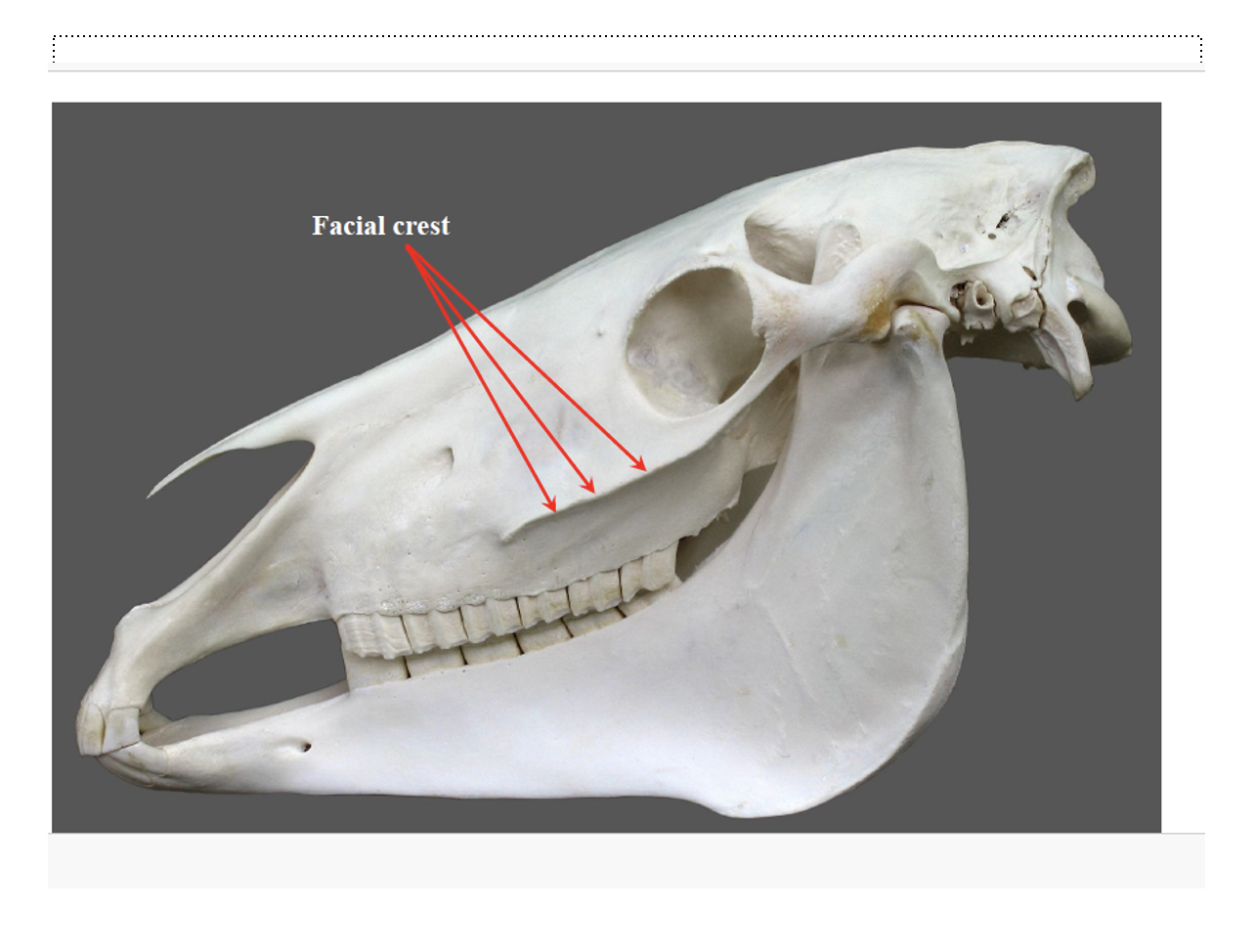
Facial muscles related to____
Masticatory muscles related to _____
expression
eating
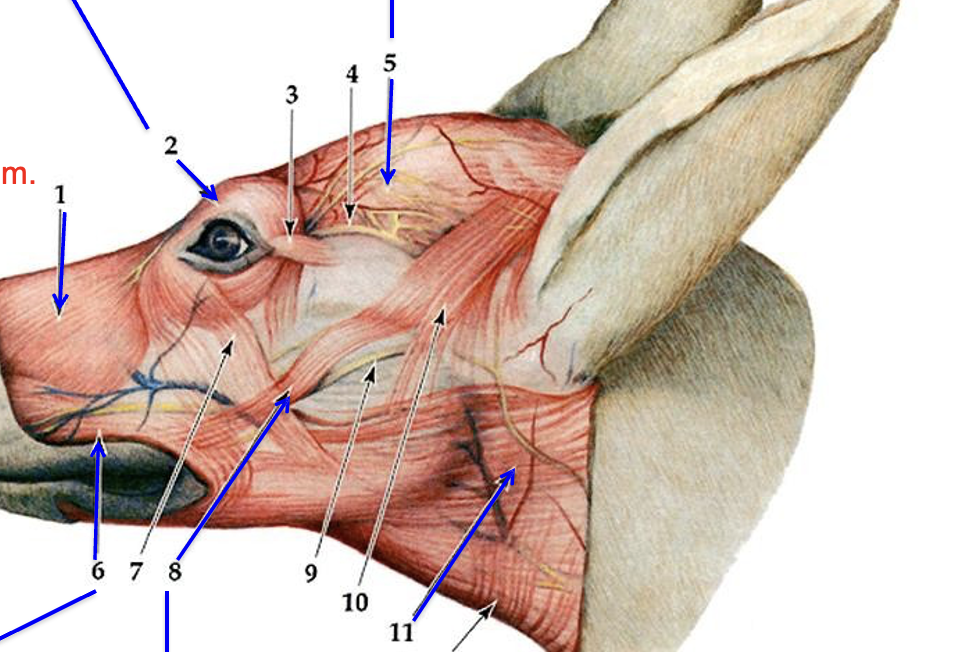
facial muscles blue arrows
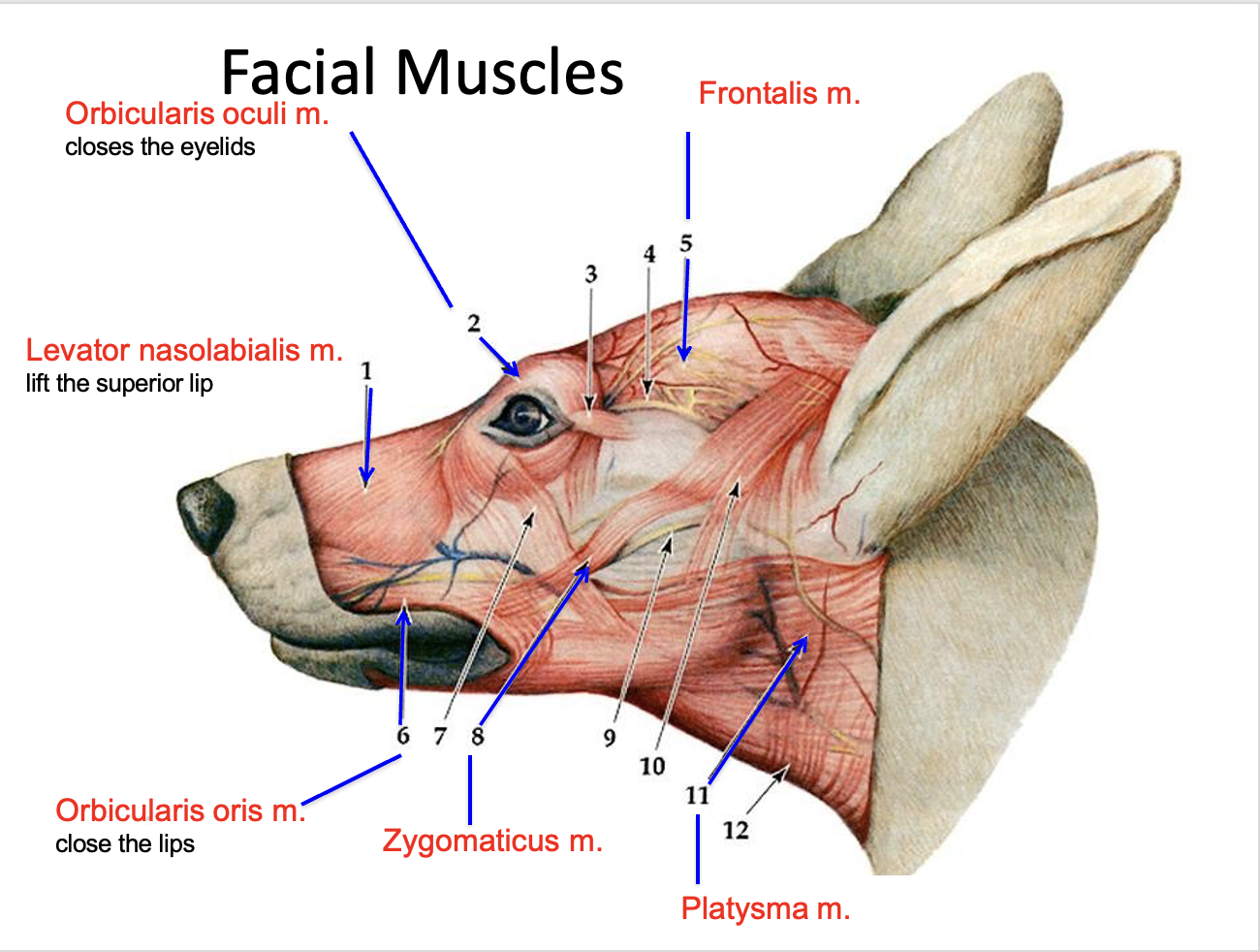
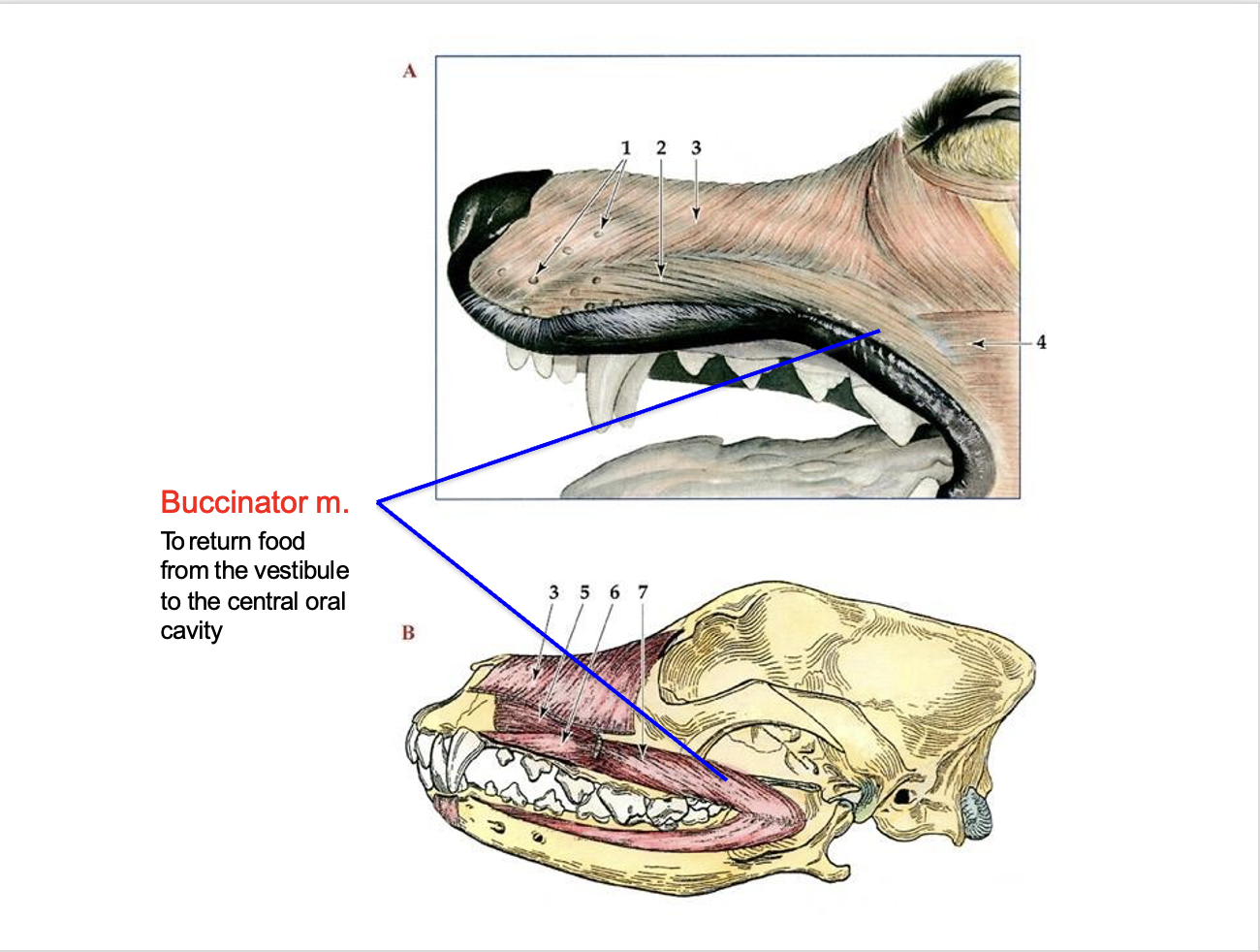
Masticatory muscles are made to ____ the mouth
close
Think of croc. dont need too much muscle to open but needs a lot of bite force
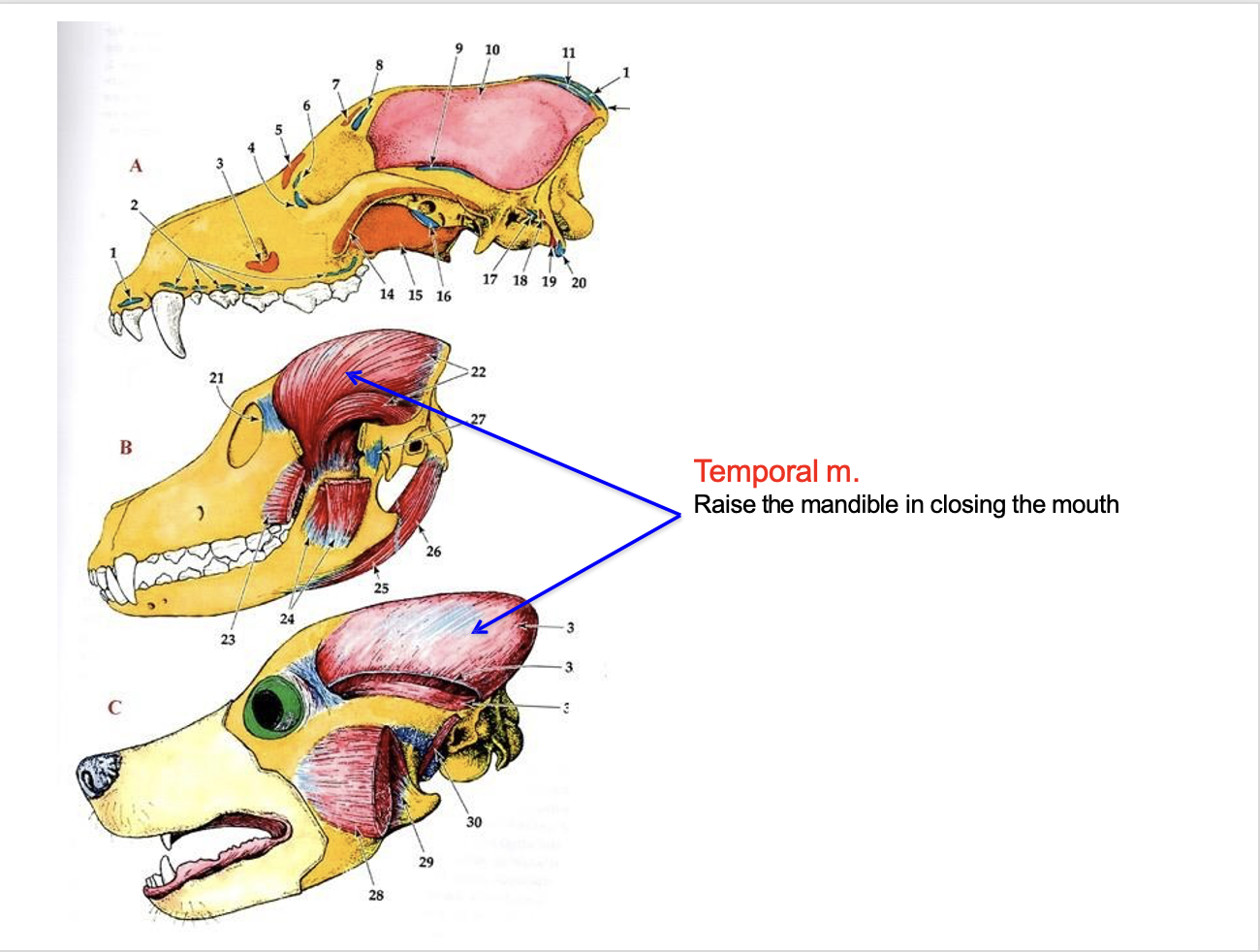
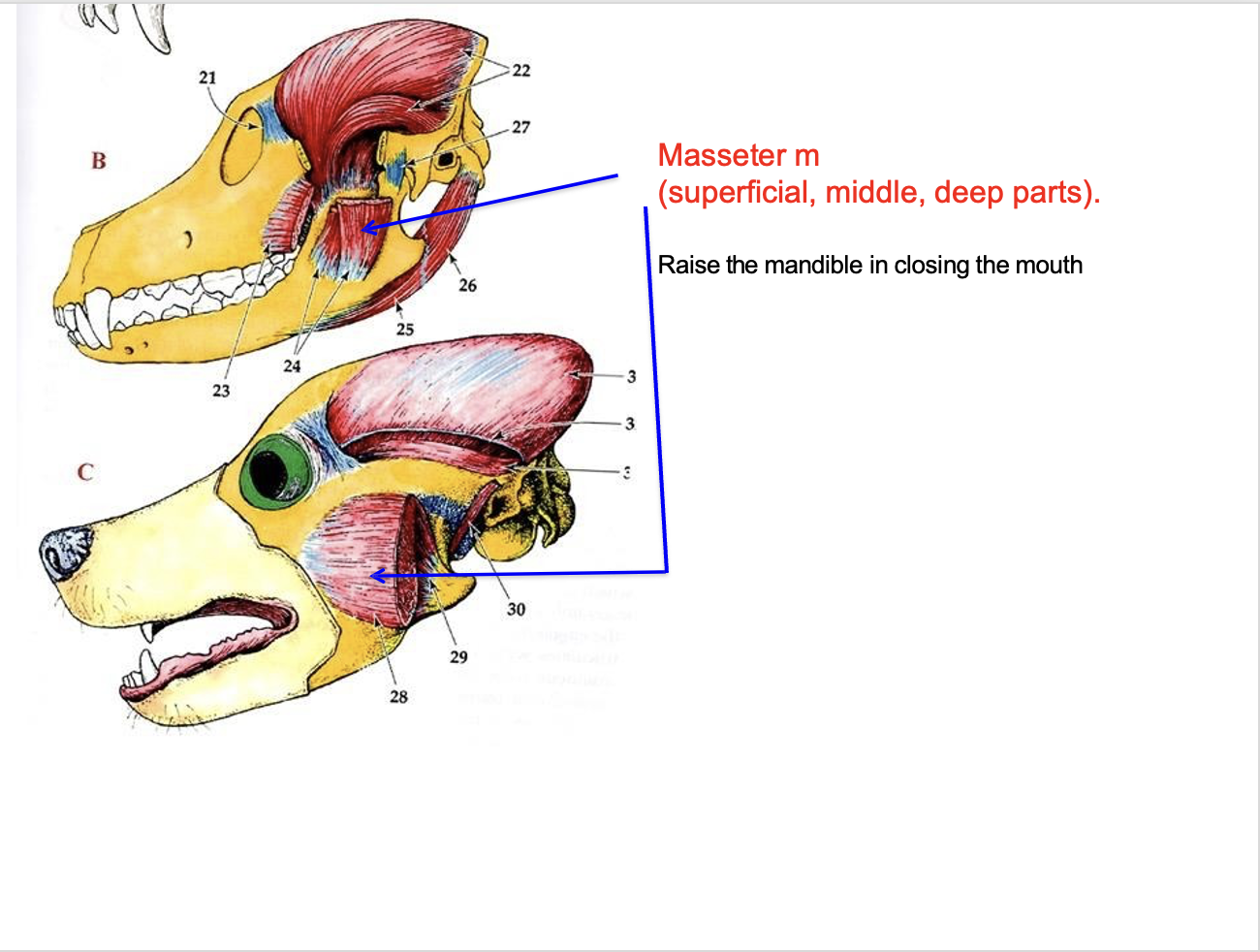
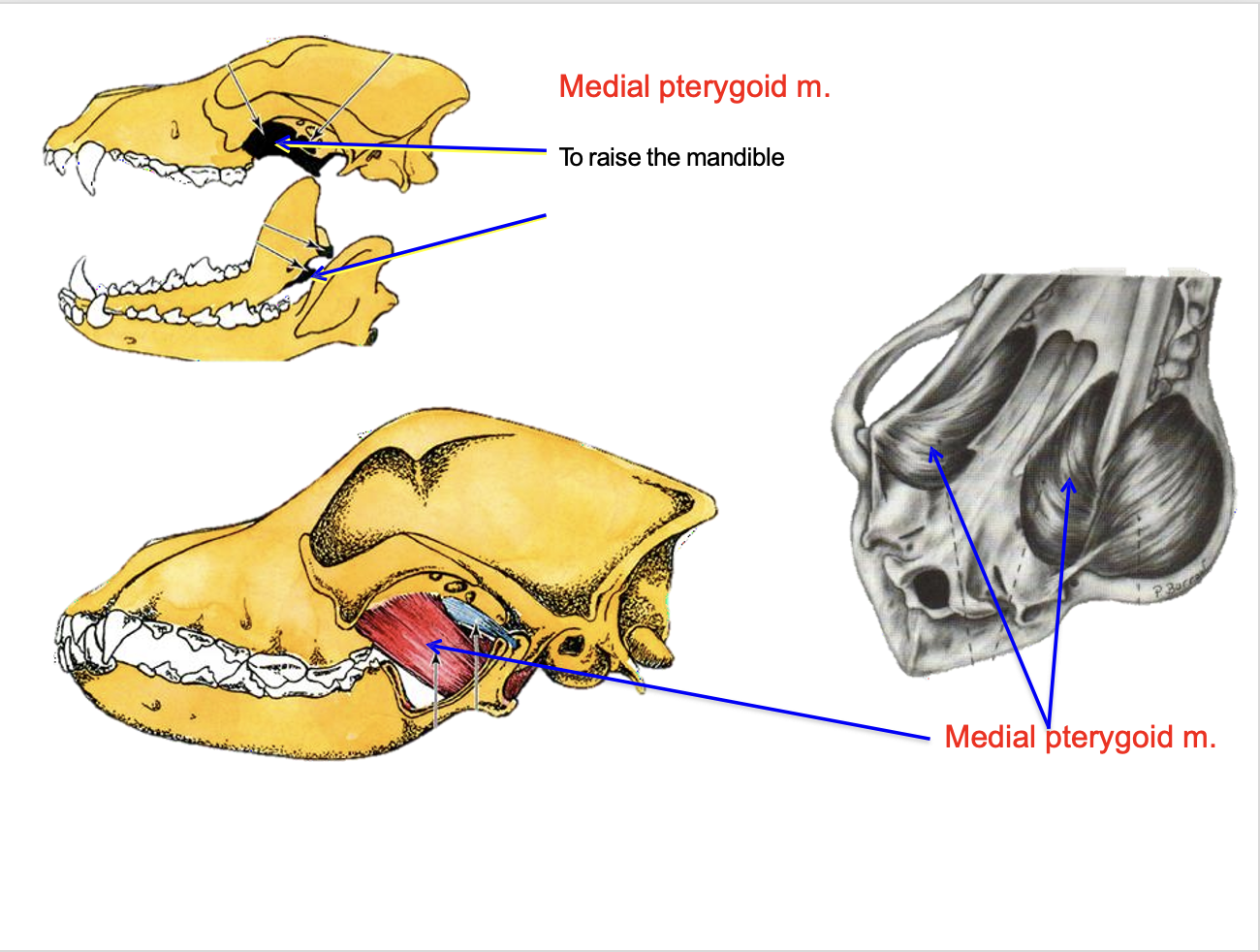
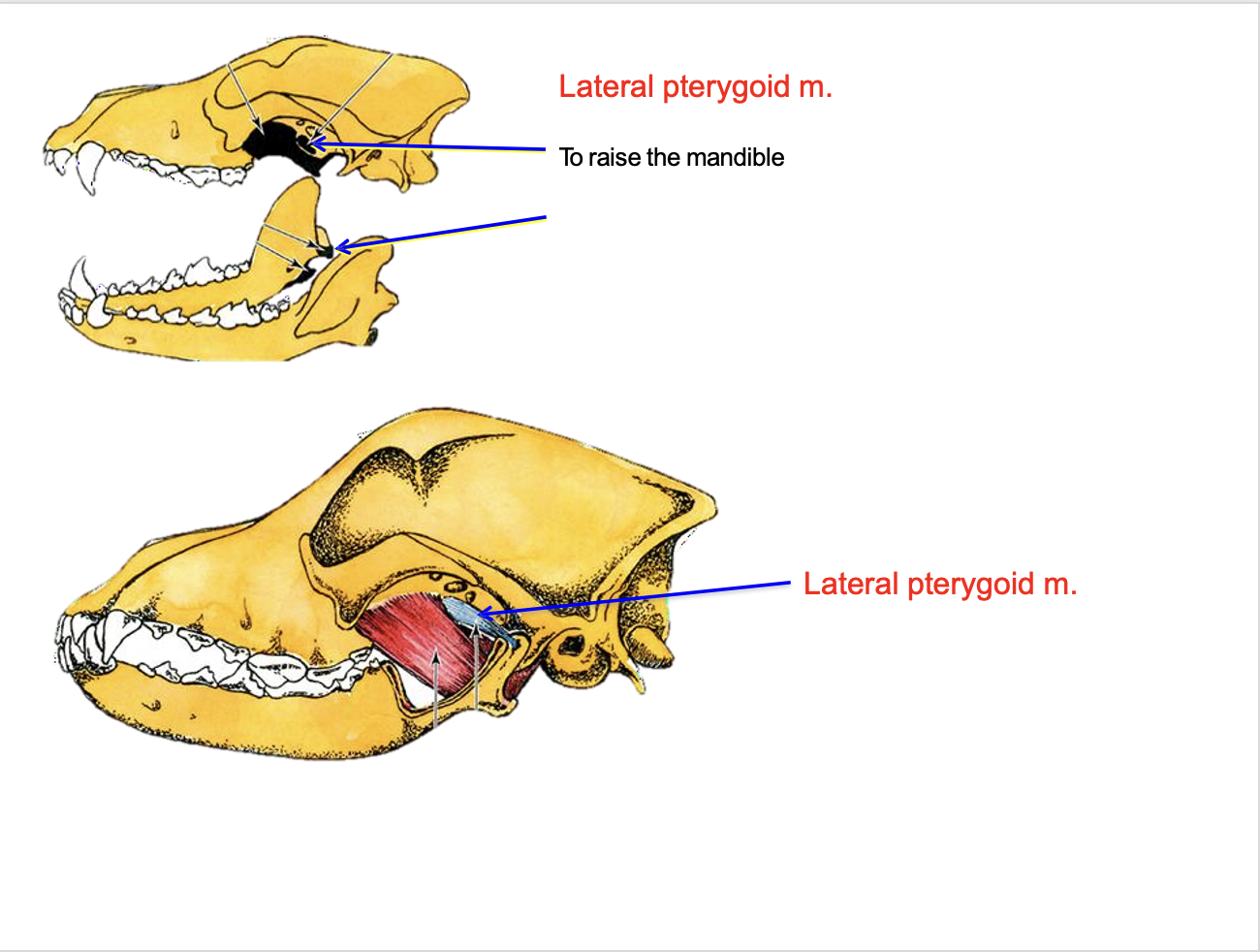
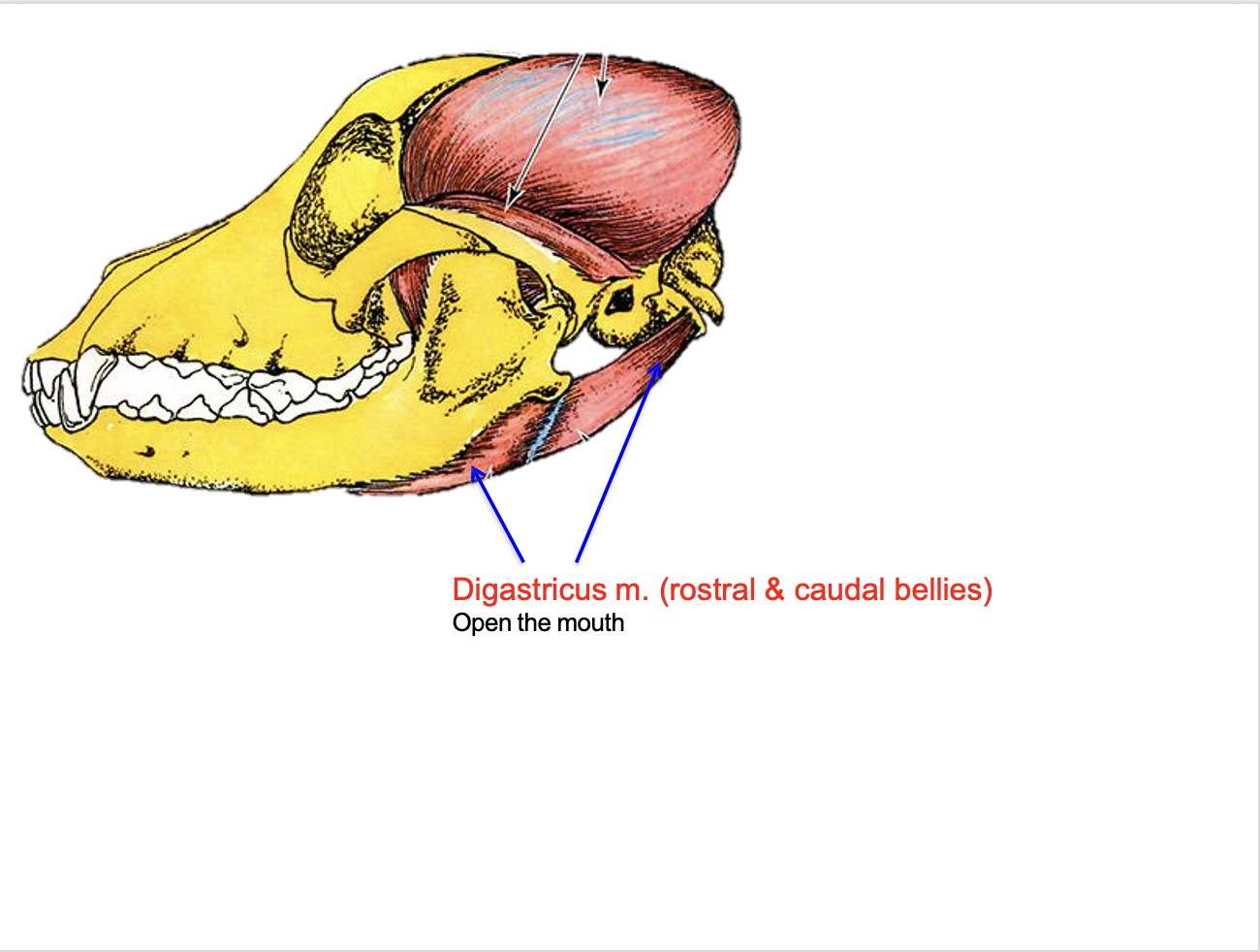
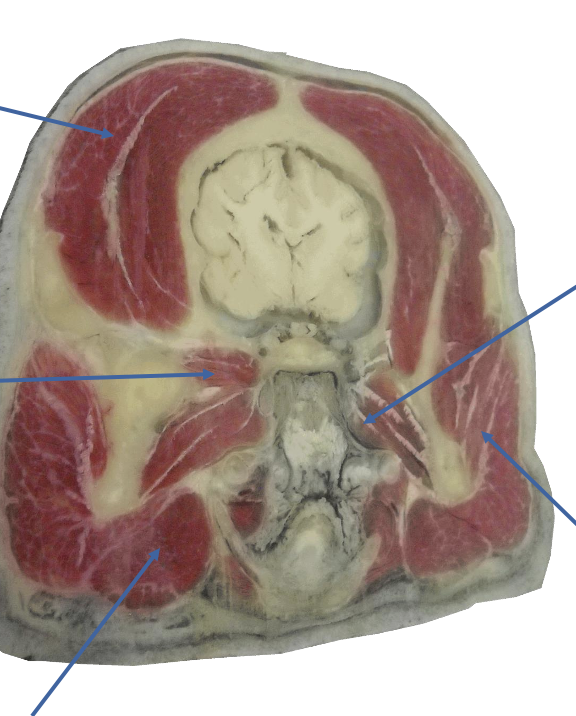
Label skull M.:
